Yolanda Shea
Research Physical Scientist
NASA Langley Research Center and the CLARREO Pathfinder
Illuminating EARTH’S Climate Puzzle
INSIDE: Showing the Way to a Career in Energy
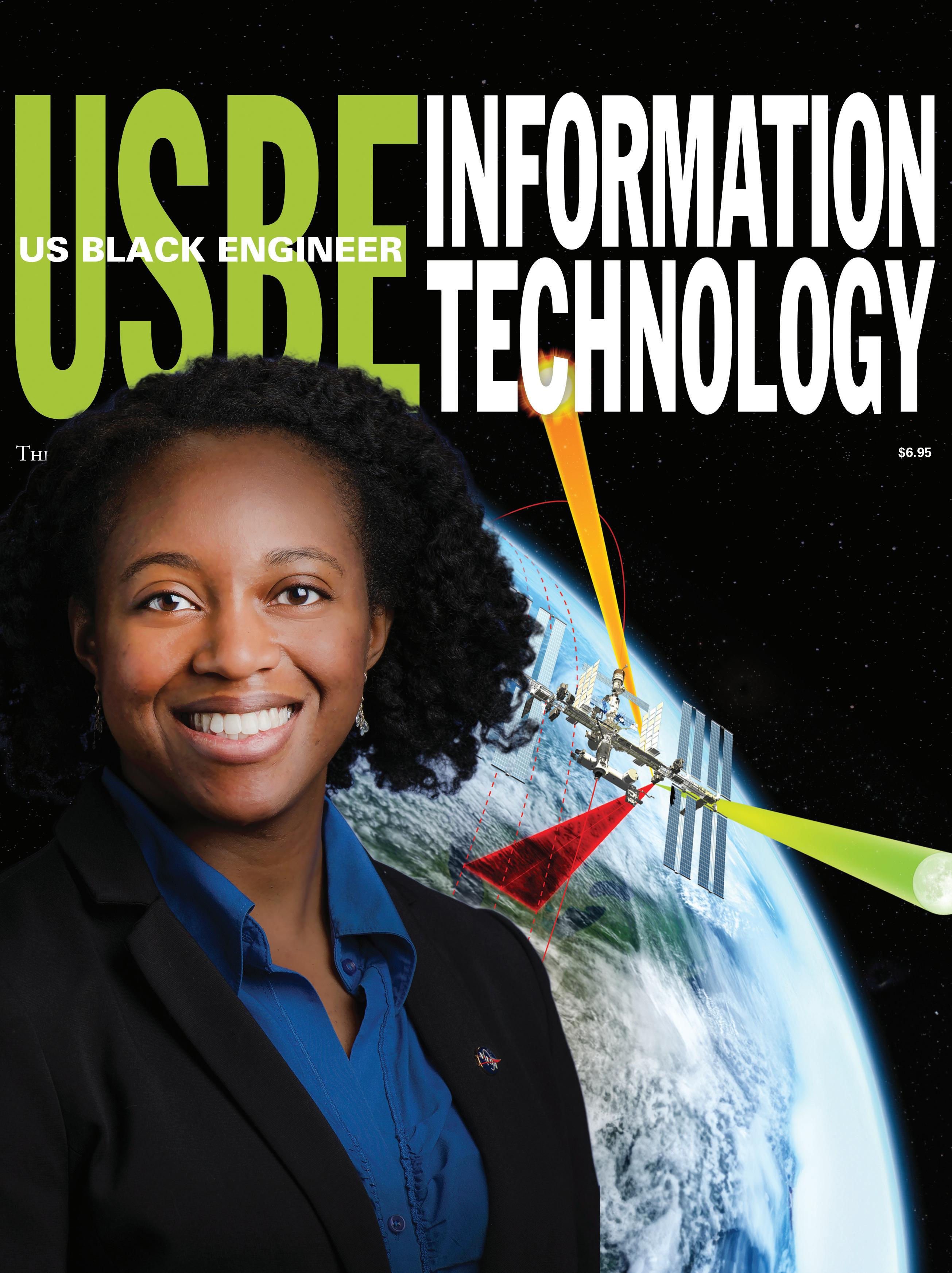
N.C. A&T - Prepping the next Generation of Black Leaders in Energy
Climate Change vs. Climate Warming
USBE&IT Environmental Issue 2023 www.blackengineer.com
2023 ENVIRONMENTAL AND CLIMATE ISSUE
The Air Force Research Laboratory (AFRL) provides unparalleled research and technology solutions for both the Space Force and Air Force. When others say its impossible, AFRL finds a way. Join our team to lead, discover, develop and deliver tomorrow’s technology.




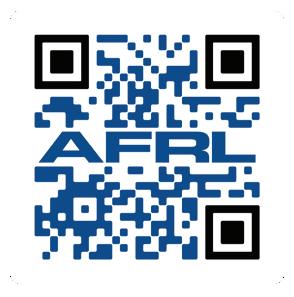



DEVELOPING
TOMORROW’S TECHNOLOGY
AFResearchLab.com Listen to the Lab Life podcast. Check out exciting civilian career opportunities @ AFResearchLab.com/CAREERS
Your growth potential starts here,
We

careers.leidos.com/USBE
are creating more
for our employees and those who join us,
us all to grow together.
is continuously building on the steps
led
substantial
2023.
6 LEIDOS IS SEEKING POWERHOUSE TALENT FOR POSITIONS IN THE AREAS OF IT, ENGINEERING AND SCIENCE. ©Leidos. All rights reserved. An equal opportunity employer: disability/vet.
opportunities
enabling
Leidos
that
to
growth in 2022 and
Along with recognition as America’s greatest workplaces for diversity, Leidos is proudly positioned as one of America’s most ethical companies and a leading disability employer.
COVER 34
Yolanda Shea talks about the CLARREO Pathfinder (CPF). The CPF will help us detect climate trends decades sooner than is otherwise possible.
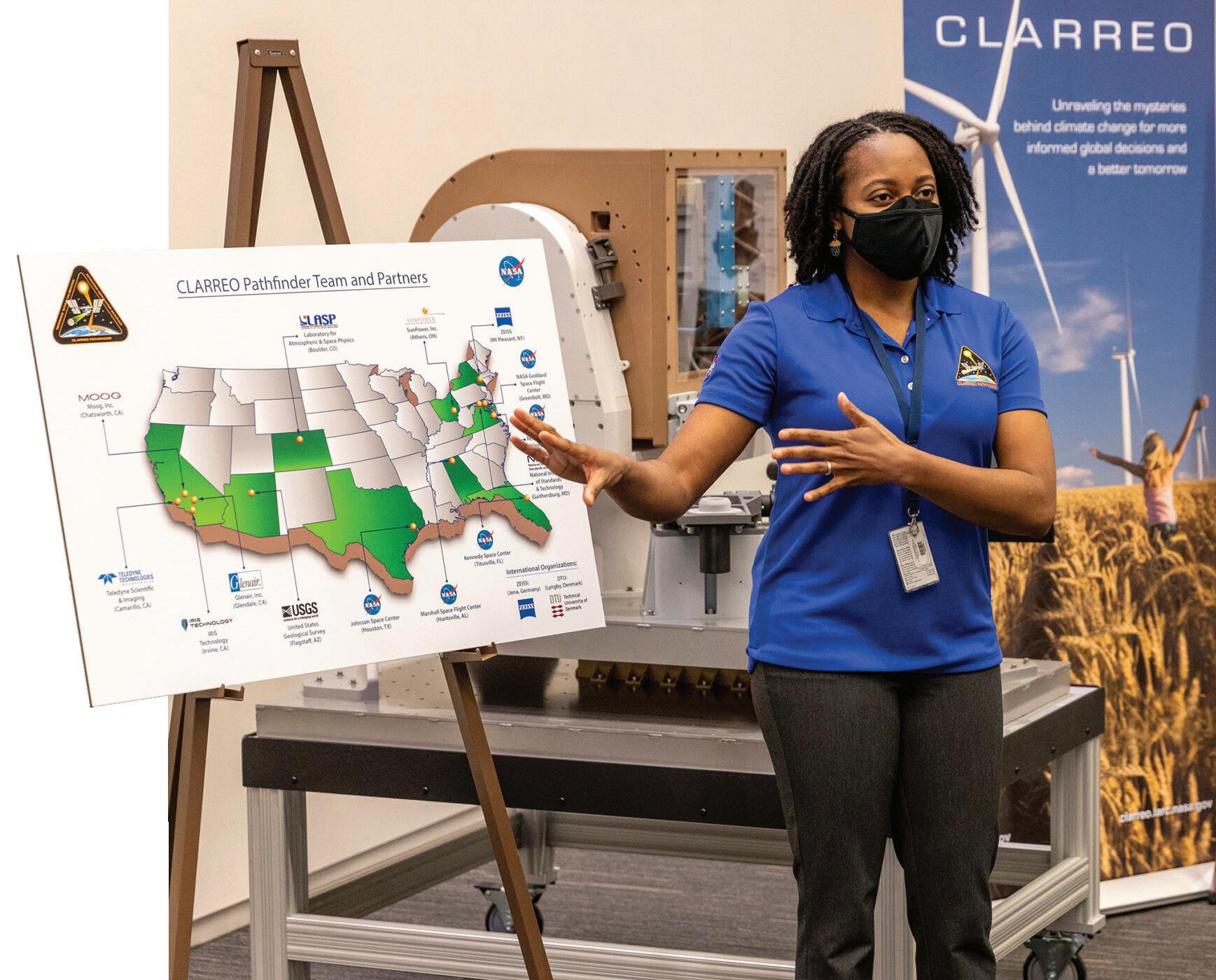
22 THE CRITICAL ROLE OF WATER MANAGEMENT IN OUR FUTUREDr. Tolessa Deksissa discusses the critical role of water management in our future.
26 EACH ONE, TEACH ONE - The contributions of Historically Black Colleges and Universities to advancing energy innovation and nurturing Black talent.
30 THE INTERCONNECTED PLANET: UNDERSTANDING THE REALITIES OF CLIMATE CHANGE - Renowned climate scientist Patrick Taylor, based at NASA Langley Research Center, offers profound insights into the current state of our planet.
BRINGING TECHNOLOGY HOME TO THE BLACK COMMUNITY
US BLACK ENGINEER & INFORMATION TECHNOLOGY
cover photo: Shandell Taylor
4 USBE & Information Technology | ENVIRONMENTAL ISSUE 2022 www.blackengineer.com
CONTENTS
Yolanda Shea sharing the benefits of the CLARREO Pathfinder mission to community stakeholders (April 2019 NASA).
TOP SUPPORTERS IN ENERGY

The U.S. Department of Energy has once again been recognized for its support of historically Black colleges and universities (HBCUs) in a survey conducted by US Black Engineer & Information Technology magazine. This survey reflects the opinions of engineering deans and the Advancing Minorities’ Interest in Engineering (AMIE) organization on the level of support HBCUs receive from the government and industry.

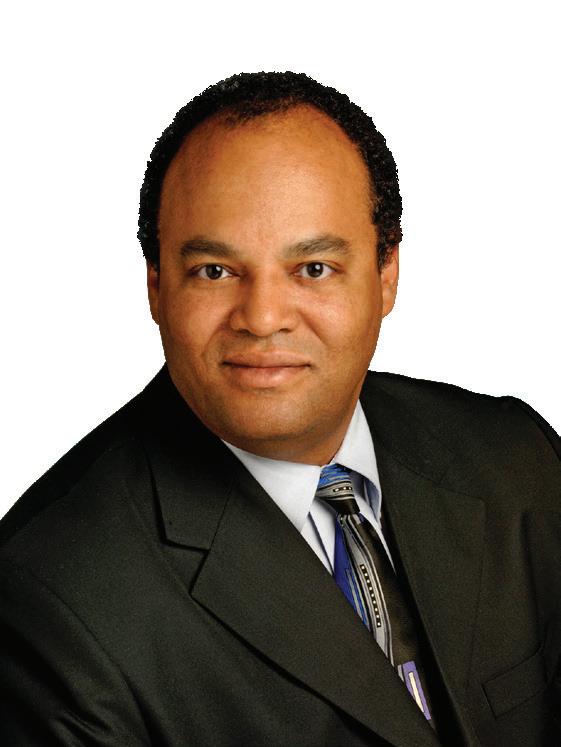
The DOE has collaborated with AMIE since the early 1990s to promote education in science, technology, engineering, and math (STEM) and to enhance diversity in energy careers. The DOE notably contributed to this effort by establishing the DOE Chair of Excellence Professorship, which is now known as the Dr. Samuel P. Massie Chair of Excellence and focuses on environmental disciplines at HBCUs.
A recent issue of the U.S. Energy & Employment Report covers all energy-related employers, including electric power generation, transmission, distribution, storage, different fuels, energy efficiency, and motor vehicles. The report provides valuable insights into energy jobs related to infrastructure, production, and various professional roles, including construction, utility, and operations.
In this issue of USBE magazine, we highlight how the DOE and top supporters in the energy sector, such as the U.S. Department of Transportation, Ford Motor Company, and General Motors, are developing STEM talent and building skills in energy technologies for future generations.
Several companies, such as Alabama Power, BASF Corporation, Chevron, Dominion Power, Exelon, ExxonMobil, GE, Southern Company, Siemens, Shell, Toyota, and Texaco, have partnered with HBCUs to support co-op and internship programs that encourage students to pursue their educational and career aspirations. For instance, BASF Corporation’s Engineering Professional Development Program collaborates with two HBCUs to recruit top engineering talent into internships and full-time rotational programs.
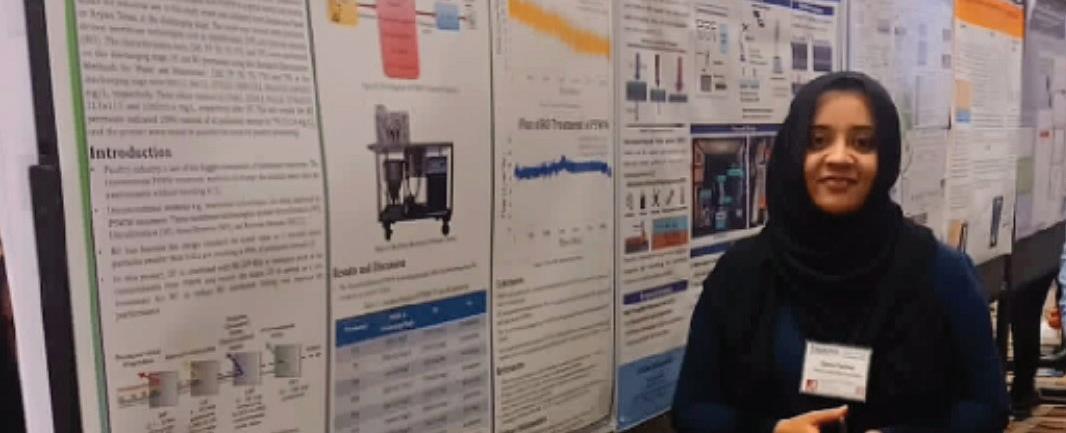 Tyrone
Chief
Tyrone
Chief

5 USBE & Information Technology | ENVIRONMENTAL ISSUE 2022 www.blackengineer.com
and
People and Events ............. 8 Recent promotions, breaking news on HBCU campuses, and major events happening in the STEM community. One on One ...................... 10 Roderick Jackson offers his thoughts on why diverse voices are necessary to solve energy disparities. Education ......................... 12 North Carolina A&T University is preparing the next generation of Black engineers for jobs in energy. Here’s how. Career Voices ................... 16 Connect with USDA Forest Service scientists providing leading scientific knowledge of carbon and climate change for climate-smart management decisions in the nation’s forests and grasslands. Corporate Life .................. 18 Retired Colonel Al Trimble sheds light on the connection between national security and climate security. Leading Voices .................. 38
Larry Laws, Baltimore Gas and Electric - My Journey in the Energy Field: Overcoming Challenges and Making a Difference
Henry McKoy, Dept. of EnergyCreating Change Through the U.S. Office of State and Community Energy Programs Career Outlook ................. 43 Check out careers in energy and the opportunities there will be to enter this field• Industry Overview • Job Horizons • People to Know • Companies to Work For PUBLISHER'S PAGE DEPARTMENTS VOLUME 46 NUMBER 3 NOW THE MOST READ BLACK TECHNOLOGY MAGAZINE REACHING OVER 100,000 READERS IN THE UNITED STATES, UK, AND SOUTH AFRICA Visit us online 26
D. Taborn Publisher
Content Officer
•
•
EXECUTIVE OFFICE
Tyrone D. Taborn, CEO and Publisher
Jean Hamilton, CFO, President
Ty Taborn, Esq., Executive Sr. V.P. & General Counsel
Kwan Hurst, COO, Operations
Alex Venetta, Exec. V.P. of Corporate Development
Eric Price, V.P., Human Resources
EDITORIAL AND CONTRIBUTING EDITORS
Rayondon Kennedy, Manager, Digital and Print Operations
Lango Deen, Technology Editor
Michael Fletcher, Contributing Editor
Gale Horton Gay, Contributing Editor
Garland L. Thompson, Contributing Editor
Roger Witherspoon, Contributing Editor
GRAPHIC & DIGITAL DESIGN
Beverly Wladkowski, Art Director
Bryan Davis, Digital Director
Rachael DeVore, Multimedia Designer
Courtney Taborn, Digital Marketing Manager
Jessica Hernandez, Graphic Designer
DIGITAL PLATFORM AND DEVELOPMENT


Nikkie Stevens, Director of Metaverse Platforms
Abdul-Malik Mahmud, Director of Virtual Reality Programs
Terrence Fooks, Metaverse Platform Program Manager & Client Relations Specialist
CORPORATE AND ALUMNI RELATIONS
Dr. Gwendolyn Boyd, CCG Alumni Committee Chair and President
Dr. Eugene DeLoatch, Chairman, BEYA Alumni Group
Vice Admiral Andy L. Winns, USN (Ret) National Chair, BEYA Military Alumni
Oliver “Bo” Leslie, Retired Program Manager, Historically Black Colleges and Universities/ Minority Institutions, The Boeing Company
Monica E. Emerson, Women of Color STEM Conference National Chair
Matt Bowman, CCG Military Program Manager Stars and Stripes Committee Executive
Director/Chief of Staff for VADM Walt Davis, USN (Ret.)
SALES AND MARKETING
Gwendolyn Bethea, V.P., Corporate Development
Kameron Nelson, Account Executive
Elyse Holdaway, Account Executive
Lucille Kennedy, Sales Support Assistant
Jay Albritton, Social Media Account Manager
Jessica Rafaeil, Communications Manager
JOBMATCH AND STUDENT DEVELOPMENT PROGRAMS
Ashley Turner, University Relations Manager
Rod Carter, Recruitment Specialist, College Relations
Shelia Richburg, College Coordinator
CONFERENCE AND EVENTS
Ana Bertrand, Conference Coordinator
Jennifer Roberts, Customer Service Manager
Brandon Newby, Administrative Assistant
Sarah Blum, Youth Services Coordinator
Tarase Whetstone, Executive Assistant
ADVERTISING SALES OFFICE
Career Communications Group, Inc. 729 E. Pratt Street, Suite 504 Baltimore, MD 21202 Phone: (410) 244-7101 / Fax: (410) 752-1837
US Black Engineer & Information Technology (ISSN 1088-3444) is a publication devoted to engineering, science, and technology and to promoting opportunities in those fields. US Black Engineer & Information Technology cannot be responsible for unsolicited art or editorial material. This publication is bulk-mailed to colleges and universities nationwide. Subscriptions are $26/year. Please write to US Black Engineer & Information Technology, Subscriptions, 729 E. Pratt St., Suite 504, Baltimore, MD 21202. Copyright © 2023 by Career Communications Group, Inc. All rights reserved. Printed in the U.S.A.

Follow
For
Like
Follow us on Twitter: @BlackEngineer The38th
Like us on Facebook: facebook.com/BEYASTEM
us on Twitter: @BlackEngineer
more information, call us at 410-244-7101
us on Facebook: facebook.com/BEYASTEM
FEBRUARY 15-17, 2024 www.beya.org
SAVE THE DATE
Mission
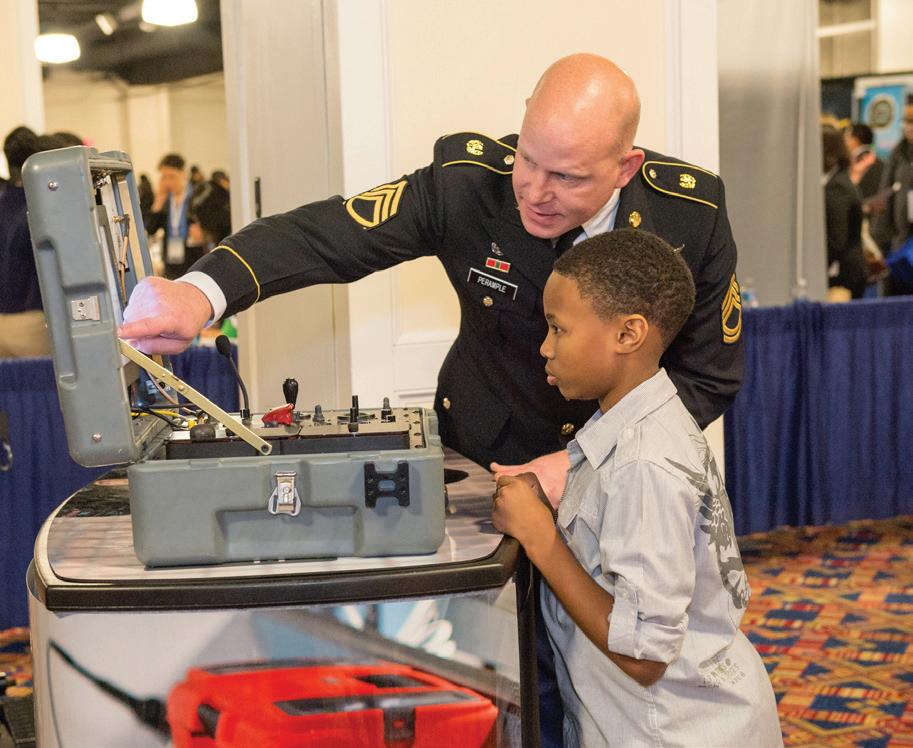
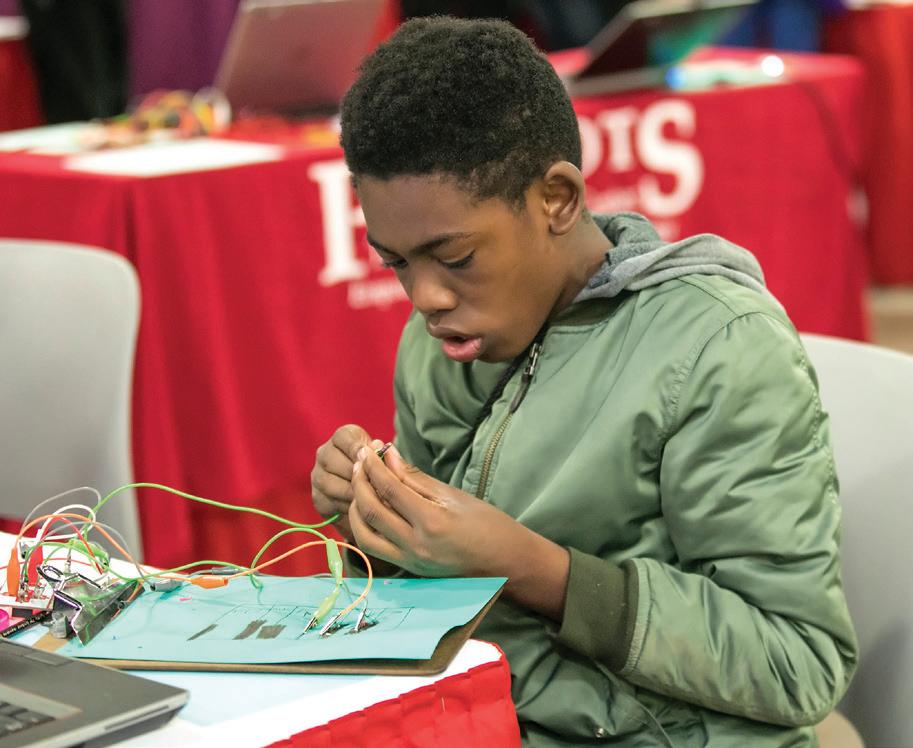
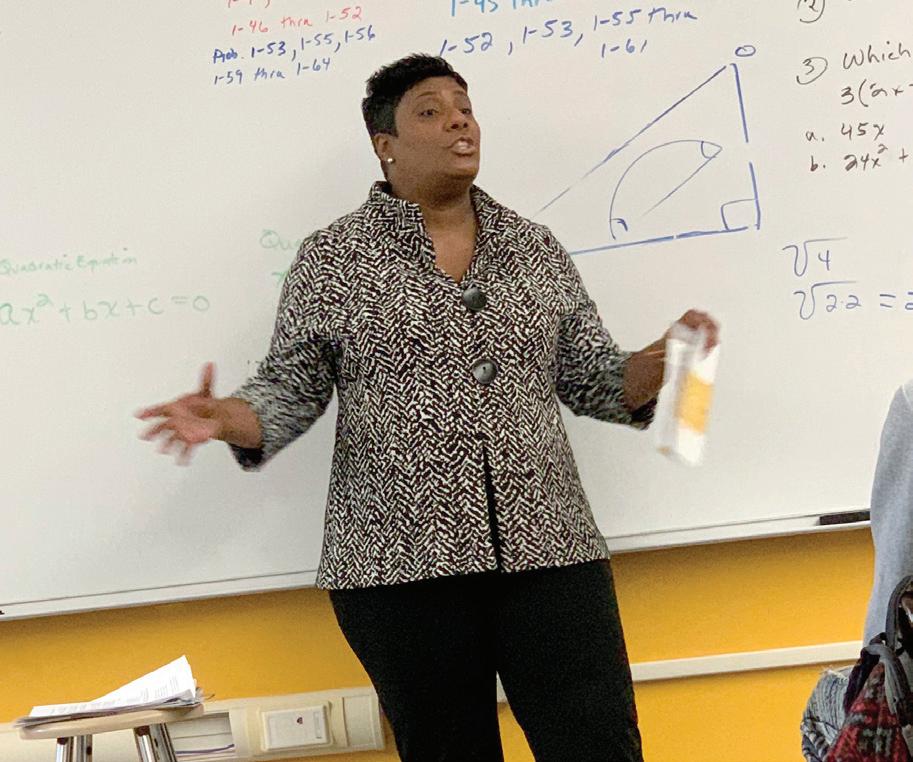

Ad We,re building a future generation of STEM leaders 729 E Pratt Street, Suite 504 Baltimore, MD 21202 www.ccgmag.com Classroom
it
Experience Our
Career Fair Speaker Series For more information please contact Rayondon Kennedy at 410-244-7101 www.becominganengineer.org
Don,t do
alone
Mentoring Our
To empower professionals to motivate, educate, and mentor future generations of diverse STEM leaders.
&PEOPLE EVENTS
five decades cultivating Black energy leaders, to discuss how diversity, equity, and inclusion are key to leading the clean energy transition,” tweeted Butler.
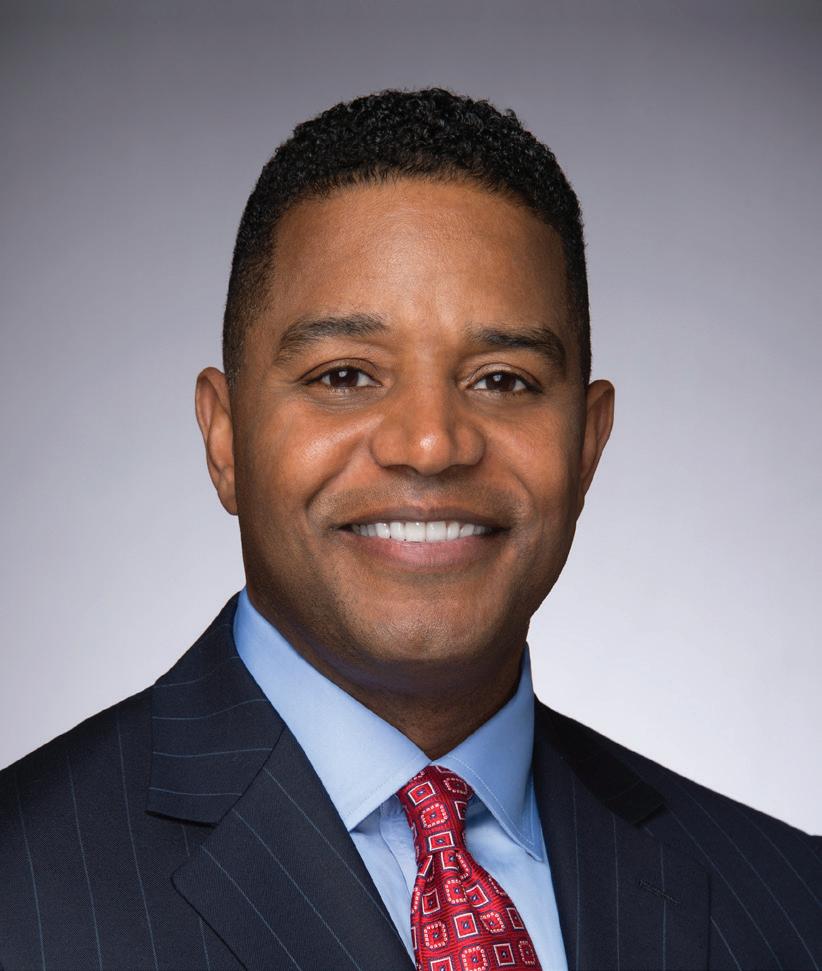
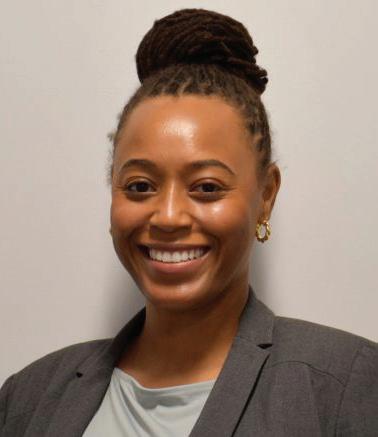
New study sheds light on why pollution levels remain high during winter months
Exelon President & CEO Calvin G Butler gives keynote at AABE
The American Association of Blacks in Energy (AABE) held its 46th annual conference May 2–5 in Houston, TX. Exelon President and CEO Calvin G. Butler gave a keynote on the importance of building connections and innovation within the industry while ensuring room for diverse perspectives. “It was a pleasure to speak with AABE, an organization that has spent nearly
The Wintertime Investigation of Transport, Emissions, and Reactivity (WINTER) project has revealed new insights into the impact of power plant and car emissions on hazardous particulate levels in the eastern United States. While previous studies focused on summer air quality, this research sheds light on why pollution levels remain high during winter. The National Science Foundation (NSF) supported the study with additional funding from the National Oceanic and Atmospheric Administration’s (NOAA) Earth System Research Laboratory. The research group—made up of scientists from North Carolina A&T State University, the University of Washington, Georgia Institute of Technology, the University of Colorado Boulder, and Colorado State University—spent six weeks on a C-130 aircraft operated by the NSF and the National Center for Atmospheric Research, conducting atmospheric physics and chemistry research.
Dr. Allanté Whitmore, U.S. director of the Autonomous Vehicle Initiative for Securing America’s Future Energy (SAFE)
The
director of SAFE’s selfdriving initiative has a joint Ph.D. from CMU
Dr. Allanté Whitmore has served as the U.S. director of the Autonomous Vehicle Initiative for Securing America’s Future Energy (SAFE) since January 2022. SAFE enhances the nation’s energy security and supports economic resurgence and resiliency by advancing transformative transportation and mobility technologies. Whitmore recently completed a joint Ph.D. in the Department of Civil and Environmental Engineering and the Department of Engineering and Public Policy at Carnegie Mellon University. She has an extensive background in autonomous vehicle (AV) technology and policy expertise from researching AVs’ environmental, equity, economic, and ethical impacts.

8 USBE & Information Technology | ENVIRONMENTAL ISSUE 2022 www.blackengineer.com
by Lango Deen ldeen@ccgmag.com
Calvin Butler, President & CEO, Exelon
SF/NCAR C-130 aircraft during WINTER campaign at NASA Langley Research Center
Deep South Center for Environmental Justice releases two-year impact report
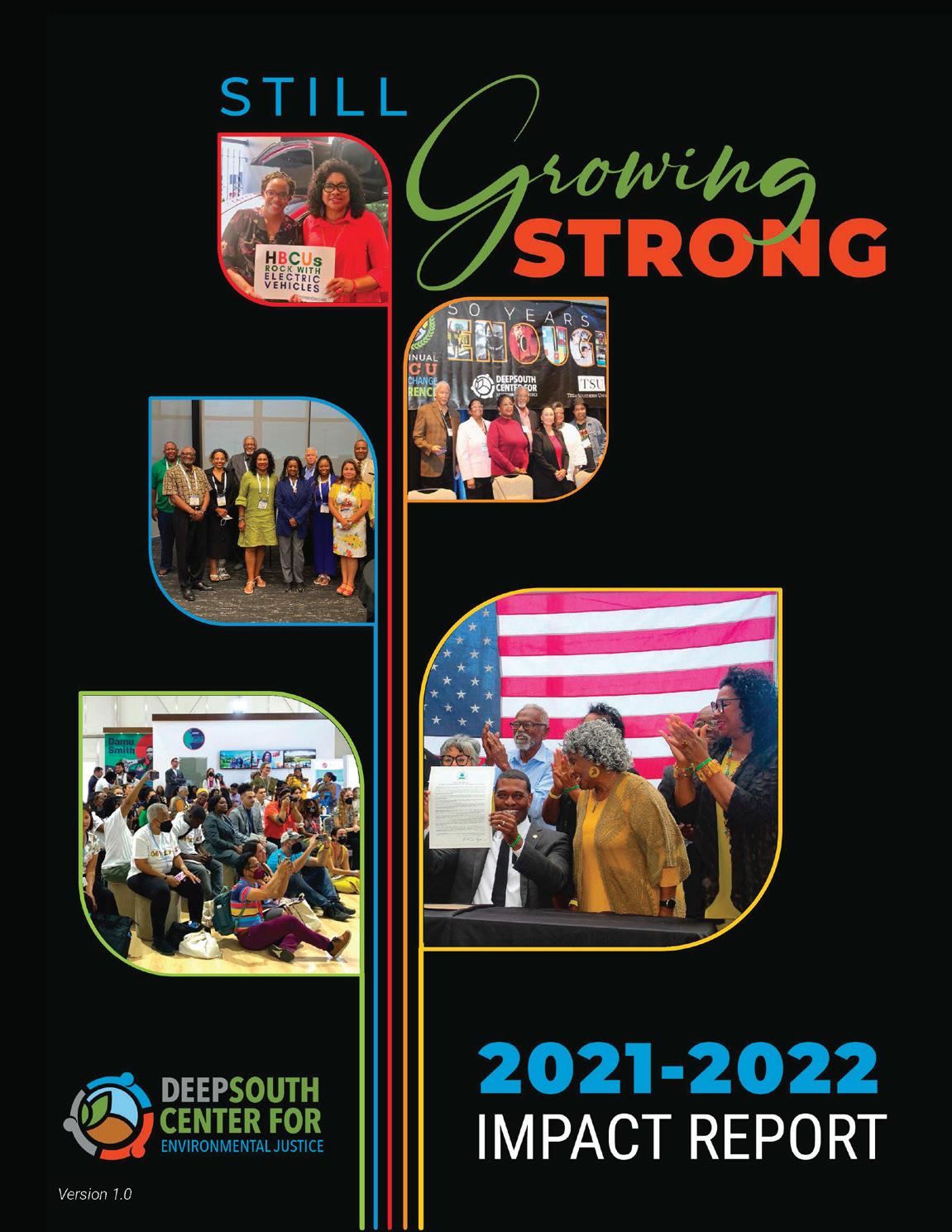
The Deep South Center for Environmental Justice empowers communities historically affected by racism. They prioritize communityled solutions to the climate crisis and promote ecological justice. Dr. Beverly Wright was appointed to the new White House Environmental Justice Advisory Council in 2021 to provide recommendations on addressing environmental injustice. The administration’s Justice40 approach requires disadvantaged communities to receive 40 percent of federal clean energy investments. DSCEJ organized a “toxic tour” that brought EPA Administrator Michael Regan face to face with the effects of living with polluting industries. The EPA issued enforcement actions and announced the creation of the Office of Environmental Justice and External Civil Rights to advance environmental justice. S
SAVE THEDATE
30TH ANNIVERSARY ADVANCING MINORITIES’ INTEREST IN ENGINEERING (AMIE) ANNUAL CONFERENCE

September 10-12, 2023
Washington, D.C. www.amiepartnerships.org
WOMEN OF COLOR STEM DTXTM CONFERENCE
October 12-14, 2023
Detroit, MI, and the WOC DTX Platform www.womenofcolor.net
BEYA STEM DTXTM CONFERENCE
February 15-17, 2024
Baltimore Convention Center and the BEYA DTX Platform www.beya.org
For more news and updates visit www.blackengineer.com

9 USBE & Information Technology | ENVIRONMENTAL ISSUE 2022 www.blackengineer.com
by Gale Horton Gay editors@ccgmag.com
DIVERSE VOICES NECESSARY TO SOLVE ENERGY DISPARITIES
Roderick Jackson says a more diverse engineering workforce is paramount to tackling the challenges of clean energy, but there has not been adequate awareness of the need and the opportunities.
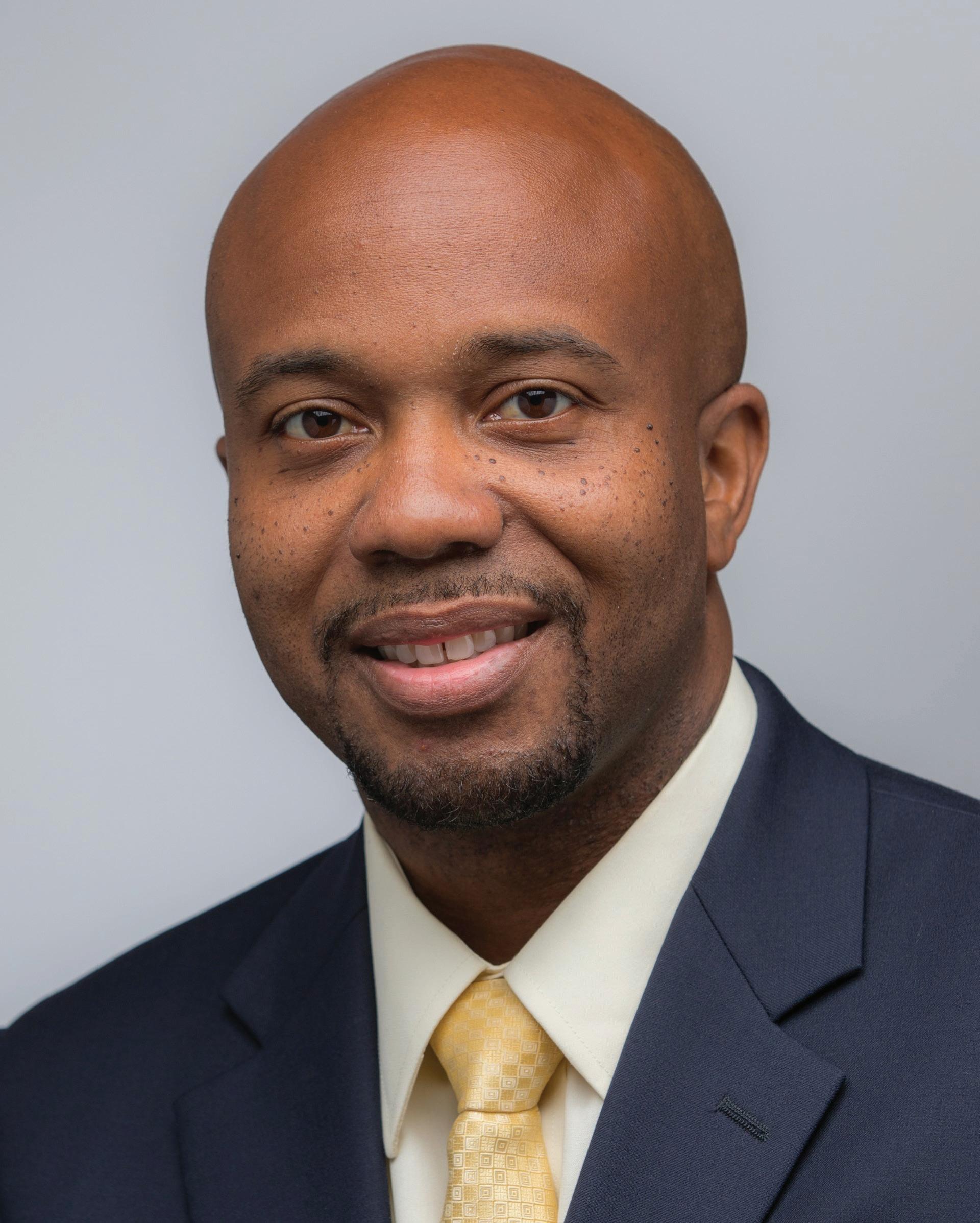
All parties involved in the energy field have a responsibility to create greater awareness of career opportunities and the need for engineers of diverse backgrounds and ethnicities to join the field, Jackson said. It’s crucial that as many people as possible have seats at the table to solve the immense energy challenges and to ensure that those solutions are equitable for all communities and not just some, he added.
“All of us are responsible,” Jackson said. Jackson is the laboratory program manager for buildings research at the National Renewable Energy Laboratory (NREL), where he sets the strategic agenda for NREL’s buildings portfolio. He describes the current state of the energy field as one of evolution.
“The current energy system is in the midst of a significant transition to a cleaner energy future,” said Jackson.
“The costs of renewable energy continue to decrease such that in many places, renewable energy like solar and wind are the lowest-cost electricity generation resources. Concurrently, we are also seeing a transition in how our transportation systems are powered. “
He noted that electric vehicles are rapidly increasing their market share, and the future is projected to continue a similar trend.
“Finally, since buildings consume
approximately 75 percent of all electricity generated in today’s energy system, the role of buildings will be essential in facilitating the most
10 USBE & Information Technology | ENVIRONMENTAL ISSUE 2023 www.blackengineer.com
ONE ON ONE
The energy field is dynamic and complex, and its involvement in climate change has had profound effects on individuals and communities worldwide.
Roderick Jackson Laboratory Program ManagerBuilding Technologies R&D National Renewable Energy Laboratory (NREL)
efficient, reliable, and lowest-cost transition to the new energy future,” he said.
Jackson is currently serving a threeyear appointment to the American Council for an Energy-Efficient Economy’s (ACEEE) Research Advisory Board, in addition to serving as an executive board member for the Southwest Energy Efficiency Project, and as a board member for the Bean Path. In 2022, he was recognized with BEYA’s Professional Achievement in Government Award.
Speaking about inequities in the current energy economy, Jackson said social inequities permeate throughout the energy system and specifically the building sector, which he testified about before the U.S. House of Representatives Subcommittee on Energy in 2021.
He noted that the median energy burden of Black households is 43 percent higher than white households, referencing the ACEEE assessment of energy burdens across the United States. He added that due to historical underinvestment, the challenges lowincome communities and communities
of color face to move to “low-carbon, safe, reliable, and resilient clean energy systems” are different and uniquely more difficult to overcome.
That’s why the need for science, engineering, and innovation are more pressing.
Jackson added that a recent New York Times study outlined how communities of color can be 5 to 20 degrees hotter in the summer than more affluent communities in the same city, pointing out that often people in these communities live in housing with lowefficiency space conditioning and poor building envelope efficiency.
The energy industry needs more engineers of diverse backgrounds, ethnicities, and genders to solve these issues of inequities and the overall complexities of improving energy systems.
“To best provide solutions applicable to all communities, we need solutions generated by representatives from all communities,” he said.
He said a broad range of jobs and careers are available in the energy field that young people likely aren’t aware of, such as:
• Data science and analysis of energy systems and controls for the highly distributed, dynamic, and digital energy system of the future. “This will also require controls and systems engineers capable of optimizing and controlling the equitable and reliable flow of energy,” he said.
• Machine learning and artificial intelligence, particularly in the area of responsible and ethical artificial intelligence to ensure the energy system of the future is equitable and fair.
• Materials science and engineering
to develop new energy storage systems capable of storing both thermal and electrical energy.
Jackson volunteers with First Robotics to expose high school students to using science, technology, engineering, and math in projects and added that he and other individuals in the energy field need to be more visible to the next generation.
Jackson, who earned bachelor’s, master’s, and doctoral degrees in mechanical engineering from Georgia Institute of Technology, came to the energy field after first working with his father as a general contractor.
Seeking to combine his interests in energy, science, and technology, he moved on to become group manager for Building Envelope Systems Research at Oak Ridge National Laboratory. He was on the forefront of connected communities research, leading an effort that established Alabama Power’s Smart Neighborhood. Working with Southern Company and the U.S. Department of Energy, it was the first project in the southeastern United States to connect highperformance homes with a community microgrid, deploying a transactive microgrid approach. S
Did you enjoy this article? Then you will love Roderick’s interview on the High-Tech Sunday Podcast: https://youtu.be/Us7xvytnDW0

11 USBE & Information Technology | ENVIRONMENTAL ISSUE 2023 www.blackengineer.com
“To best provide solutions applicable to all communities, we need solutions generated by representatives from all communities.”
PREPARING THE NEXT GENERATION OF BLACK LEADERS IN ENERGY
During the 2023 Spring Meeting of the Materials Research Society (MRS) in San Francisco, CA, Sheilah Cherono and Moses Ashie, two students from North Carolina A&T, accompanied a faculty team led by Dr. Dhananjay Kumar on a visit to the labs of Dr. Ethan Crumlin and Dr. Junko Yano.
energy that can be used in fuel cells and many other things, even in the field of fertilizers by producing ammonia. We have a large number of faculty involved from underrepresented groups in STEM. We also have many graduate students who have the opportunity to research at various academic institutions and national laboratories.”
There is a little-known U.S. Department of Energy (DOE) program that has been making waves since it was started in 2009. Funded by the energy department’s Office of Science, there are now more than 100 DOE-funded Energy Frontier Research Centers (EFRC) nationwide.
In August 2022, the DOE awarded North Carolina Agricultural and Technical (A&T) State University a grant to open an EFRC on its campus.
According to the press release, N.C. A&T’s Center for Electrochemical Dynamics and Reactions on Surfaces (CEDARS), which launched with a four-year, $10.35 million grant from the DOE, is led by Dr. Dhananjay Kumar, a professor in the Department of Mechanical Engineering in N.C. A&T’s College of Engineering and the principal
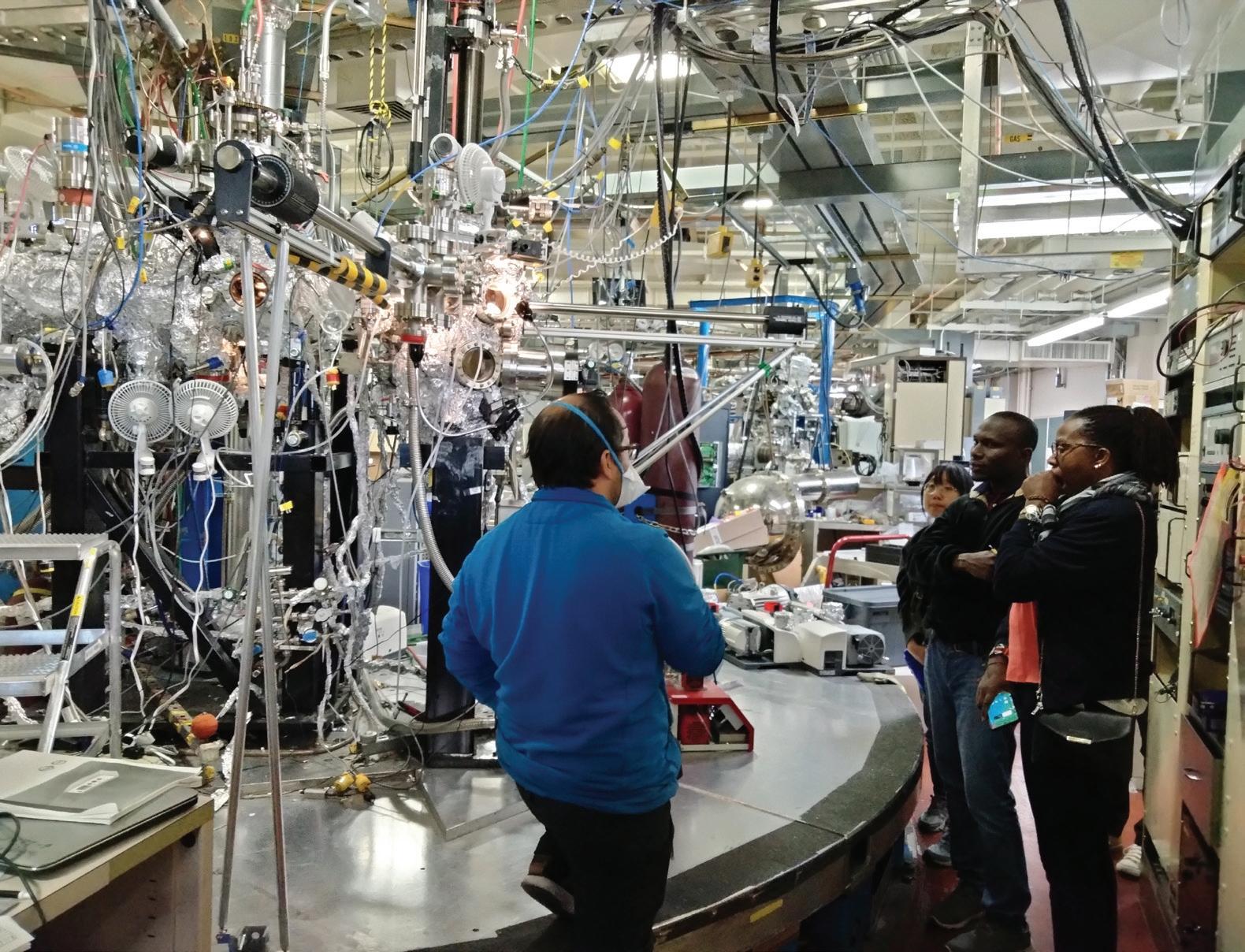
investigator of the center.
CEDARS is an interdisciplinary effort to establish clean energy initiatives. The center primarily focuses on splitting water into hydrogen and oxygen to produce clean hydrogen for energy use.
N.C. A&T is the first historically Black college and university (HBCU) to receive this funding from the DOE. “They probably selected us because of the huge potential at N.C. A&T,” Dr. Kumar told US Black Engineer magazine in a telephone interview. “More than 80 percent of our undergraduate population is African American, so we can profoundly impact the community,” noted Kumar. “This research is focused on using natural resources such as water and sunlight to break water into hydrogen and oxygen and generate
CEDARS has an equally diverse list of partners. They include the Massachusetts Institute of Technology (MIT), Cornell University, the University of Colorado, Pennsylvania State University, Lawrence Berkeley National Laboratory, Dartmouth College, and the National Renewable Energy Laboratory—a national laboratory of the DOE Office of Energy Efficiency and Renewable Energy.
“This summer, two N.C. A&T undergraduate students are doing research at Cornell University,” Kumar said. “Another two undergraduate students, trained in the center, are working in the industry. We are strongly preparing them to continue in energy and advanced technology.”
In addition to students participating in basic research and internships, more than 300 students at N.C. A&T have been impacted by the courses and modules developed at CEDARS.
The new courses and modules are designed as part of a collaboration with various faculty members from
12 USBE & Information Technology | ENVIRONMENTAL ISSUE 2023 www.blackengineer.com
EDUCATION
by Lango Deen ldeen@ccgmag.com
departments and offered to all students, not just those majoring in engineering.

“One such course is in fundamental materials science engineering,” Kumar said. “It is a very interdisciplinary



course with components from physics, chemistry, biomaterials, electrical engineering, chemical engineering, and mechanical engineering. Students take this course from all degree backgrounds. We have also invited faculty from other universities. Last
semester, a professor from Cornell University gave a couple of lectures at A&T. The course is interactive and dynamic. It incorporates things such as how solar energy can be used to develop photovoltaic solar cells, or how solar energy can split water into hydrogen and oxygen. We also have quizzes, so it is a performance-based module.”

Another module is focused on thin film technology—solar panels on rooftops and energy gadgets that come in the form of films.
“The center is focused on developing materials in thin film form,” Kumar explained. “So, knowledge of thin film technology is fundamental. Our course development will focus on how thin film technology can revolutionize some
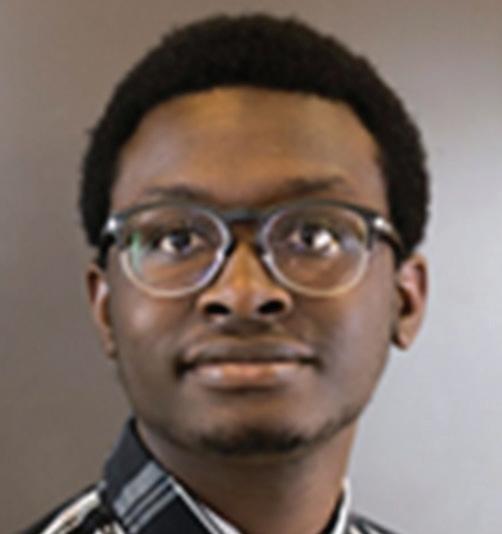


13 USBE & Information Technology | ENVIRONMENTAL ISSUE 2023 www.blackengineer.com
From left to right, the top row includes Brooke Smith, Aminah Bland, Jaedia Rogers, and Kyle Hillard. The bottom row, also from left to right, includes Destiny Shaw, Vanessa Jones, Madison Jordan, and Joshua Neal.
“We are producing students who are succeeding in the workforce. Whether it’s industry or academia, science, technology, engineering, or math research. Research is the glue that attracts and keeps students in the pipeline.”
- Dr. Dhananjay Kumar, mechanical engineering professor and principal investigator
In February 2023, Dr. Jun Suntivich, a principal investigator from Cornell University, visited North Carolina A&T. During his visit, he had numerous one-on-one meetings with both PIs and students and also spent time exploring the possibility of establishing a chemistry laboratory at N.C. A&T. He even visited the PI’s lab to gain a better understanding of the facilities available.

of these devices in the field.”
During the fall 2023 semester, Kumar’s center will host guest lecturers from MIT, Cornell, and Penn State, and researchers from the Lawrence Berkeley National Laboratory.

“It’s going to be a gala time for graduate-level students taking that thin film course,” Kumar said.
Undoubtedly, CEDARS is actively teaching and training next-generation leaders, providing them with knowledge of simulation, modeling, and experimentation used in industry.
“By giving students the right experience, we prepare them much
more strongly,” Kumar said. “A large number of undergraduate students are involved in hands-on research experience. And I am a big proponent and believer that research is a glue,” Kumar continued. “Recruitment, retention, and graduation are much more significantly affected if you involve students in research. And the earlier it is done, the better. Many students who lose interest in advanced degree education lack mentors who involve them in research, and then there is financial assistance. So, we dedicate time and funds to support our students involved in research. Meritbased or financially challenged students
are supported at the center to be involved in advanced research and instrumentation.”
Kumar insists that students from small colleges can be as well prepared as anyone because there are substantial facilities in place at N.C. A&T that matches those of institutions with very high research activity.
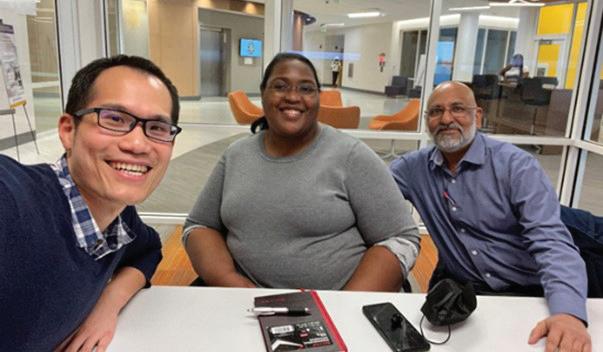
Three Ph.D. students who graduated from a previous National Science Foundation (NSF) program (the Partnership for Research and Education in Materials, or PREM), which Kumar led, are now postdoctoral researchers at Cornell University, Duke University, and North Carolina State University. As graduate students, they had their work published in a peer-reviewed journal, and another student in that cohort landed a STEM job after graduating from a master’s program. According to Kumar, the NSF PREM seed project at N.C. A&T, in partnership with Cornell University, has played a key role in the funding of the CEDARS project.
“We are producing students who are succeeding in the workforce,” Kumar said, “whether it’s industry or academia, science, technology, engineering, or math research,” he added. “As I said earlier, research is the glue that attracts and keeps students in the pipeline.”
Kumar is also doing outreach to local high schools. At least one student joined the undergraduate program at N.C. A&T. S
14 USBE & Information Technology | ENVIRONMENTAL ISSUE 2023 www.blackengineer.com
EDUCATION continued
Everyday new stories just like this are posted to http://www.blackengineer.com Check it out and stay connected.

40% of hiring managers would hire college interns for full-time, permanent positions. According to CBcampus.com Survey Let us help you! The CCG JobMatch internship program connects and places diverse students and recent graduates with top STEM employers that offer invaluable work opportunities and experiences. If you are ready to jump-start your career, visit www.ccgjobmatch.com Career Communications Group, Inc. | 729 East Pratt St., Suite 504 | Baltimore, MD 21202 | (410) 244-7101 | www.ccgmag.com
CLIMATE-SMART PROFESSIONALS AT THE UNITED STATES FOREST SERVICE, USDA
People with asthma and emphysema were advised not to go outside. Joggers were also warned that smoke could affect the heart and circulatory system. The more humankind understands the relation between climate changes and their impact upon the ecosystem, the more efficient management decisions will be in accomplishing a common goal to reduce carbon emissions.
The role of the USDA Forest Service
The United States Forest Service, which is an agency of the U.S. Department of Agriculture (USDA), manages more than 150 national forests across the United States, including 20 national grasslands and 193 million acres of land. The USDA Forest Service also shares the results of its research and information with the public. Additionally, with support from the federal government, the USDA Forest Service places itself—and its scientists—at the vanguard of the fight against the negative impacts of climate change.
The USDA Forest Service also presents an open path for STEM professionals in
multiple fields of research, with a clear goal of reducing the impact of climate change from many standpoints. Some of these views include concepts like contextual vulnerability, which studies social factors like race and gender (among others) and their impact on communities depending on their economic level. By the same token, the STEM professionals of the USDA Forest Service address issues like property vulnerability, as a disadvantage faced by low-income communities and their inability to access resources for facing climate events.
The impact of climate change can also be studied to determine national fire crisis strategies, extreme events and disturbances, chronic stretches to watersheds and related ecosystems, the destruction of the delivery of ecosystem products and services, and the disproportionate impacts on disadvantaged communities.

A deep social approach has led the USDA Forest Service to develop studies to determine the best practices for working with Indigenous communities. The result is the adaptation of traditional ecological knowledge to the preservation of natural resources and the reduction of carbon emissions.
Meanwhile, the use of machine learning software by the Forest Service helps propel initiatives like predicting the gender of trees, which provides an advantage in planning for planting and cuts costs and time.
The Forest Service also studies timber as an alternative for traditional building materials with the goal of reducing carbon emissions and climate change. Modeling exercises for global predictions and the formulation of scenarios for future weather events are included in the scope of research conducted by the Forest Service.
16 USBE & Information Technology | ENVIRONMENTAL ISSUE 2023 www.blackengineer.com
editors@ccgmag.com CAREER VOICES
Aerial photography of a massive forest fire in the Canada 2023
In June 2023, as more than 450 wildfires burned in Canada, code red air quality alerts were issued in several states across the United States.
Pictured clockwise: Consuelo Brandeis, Research Forester,USDAForestService;ConceptionFlores, NaturalResourceSpecialist,USDAForestService OfficeofSustainabilityandClimate;Cassandra Johnson Gaither, Research Social Scientist, USDA Forest Service; Grizelle Gonzalez, Director, InternationalInstituteofTropicalForestry,USDA Forest Service; Shaneka Lawson, Research Plant Physiologist/SEPMAfrican-AmericanPrograms, USDA Forest Service;
justice and the production of science for the better management of climatesmart environments. S
STEM opportunities within the USDA Forest Service
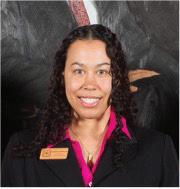
Forest Service professionals provide scientific knowledge that can be applied to make climate-smart decisions. As climate change becomes a more present factor for the planet, an even greater number of ecosystems are threatened by events such as “out of control” wildfires across 10 million acres. The international effort to reduce the impact presents opportunities and challenges for aspiring STEM professionals. More than ever, diverse voices are needed in the advancement of environmental
You can listen to the full conversation here: https://ccgmag.podbean.com/e/ woc-2022-1777-usda-forest-serviceleading-as-a-climate-smart-stemprofessional/




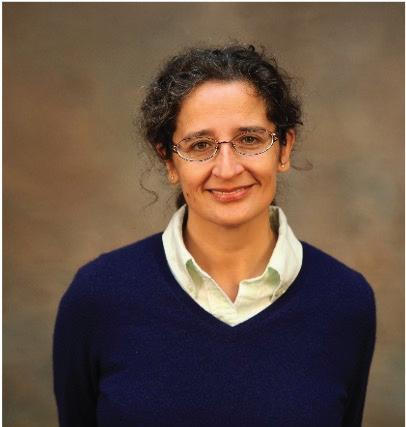
17 USBE & Information Technology | ENVIRONMENTAL ISSUE 2023 www.blackengineer.com
The use of machine learning software by the Forest Service helps propel initiatives like predicting the gender of trees, which provides an advantage in planning for planting and cuts costs and time.
RENEWABLE ENERGY AND CLIMATE SECURITY
In a recent discussion, retired U.S. Marine Col. Al Trimble shed light on the connection between national security and climate security.
As the former commanding officer of the Marine Corps logistics base in Albany, GA, Trimble spearheaded initiatives to address climate challenges and build energy resilience.
Trimble emphasized that climate change is not a future threat but a reality felt today. Destructive weather events, such as hurricanes, have showcased the urgency to prepare for climate impacts. Understanding the intersection between climate security and energy security is crucial in mitigating the consequences of climate change.
The conversation then delved into the transition from a military career to advocating for clean energy and climate security. Trimble’s background in physics and his involvement in STEM-based initiatives during his time in the Marine Corps laid the foundation for his interest in clean energy and resilience planning. His experiences highlighted the role of STEM in addressing climate change challenges.
When examining the link between national security and climate change, Trimble explained that climate impacts, such as rising heat and drought, can lead to cascading effects. These effects include migration, resource scarcity, and economic disruptions. Such challenges can fuel social and economic inequality, which, in turn, pose national security risks. Recognizing
these interconnected issues is vital in developing strategies to safeguard our nation.
In terms of solutions, Trimble stressed the importance of reducing greenhouse gas emissions by transitioning from fossil fuels to cleaner energy sources. Renewable energy options like hydro, wind, solar, and nuclear power play a significant role in combating climate change. Additionally, building resilience into infrastructure, power grids, communication networks, and even defense systems is crucial for withstanding the impacts of extreme weather events.
When asked about individual contributions, Trimble highlighted the importance of staying informed and advocating for climate action. Educating oneself about the impacts of climate change and voicing opinions to public officials are essential steps. Being mindful of energy consumption, reducing reliance on fossil fuels, and supporting clean energy initiatives are tangible ways for individuals to make a
positive impact.
During the conversation, Trimble also discussed his involvement in organizations such as Black Owners of Solar Services (BOSS) and the Atlanta Council’s Veterans Advanced Energy Program. These organizations advocate for environmental justice and equal access to clean energy, while providing opportunities for veterans interested in climate security and clean energy careers.
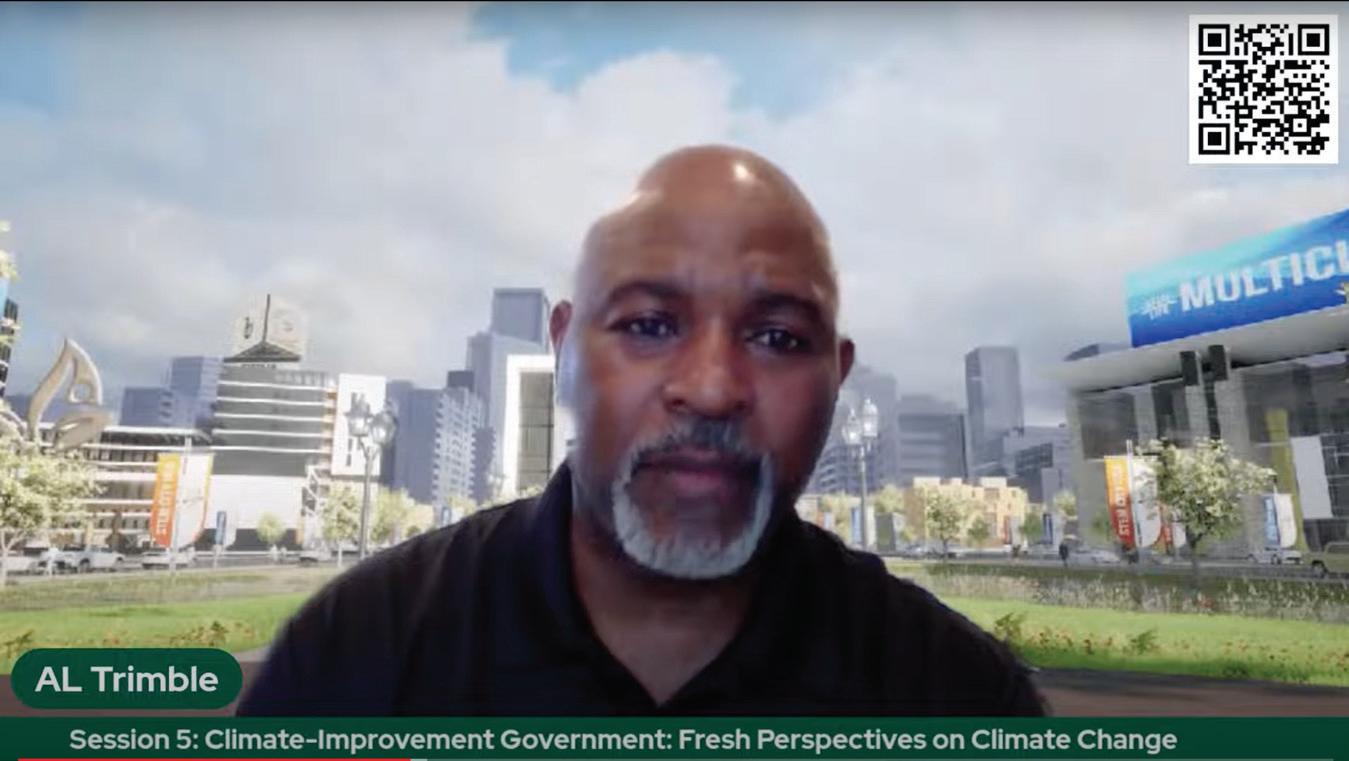
As the discussion concluded, Trimble emphasized the significance of STEM education and its role in creating an informed and proactive society. By equipping individuals with knowledge and skills in science, technology, engineering, and mathematics, we can accelerate the transition to a sustainable future.
The insights shared by Trimble shed light on the critical role of renewable energy and climate security in shaping our collective future. It is through informed actions, collaboration, and
18 USBE & Information Technology | ENVIRONMENTAL ISSUE 2023 www.blackengineer.com
Renewable energy is a critical aspect of combating climate change and ensuring a secure future for our planet.
editors@ccgmag.com CORPORATE LIFE
Col. Al Trimble, retired U.S. Marine Corps commander, was a speaker at the Green Summit held in the STEM City USA metaverse in September, 2022.
innovative solutions that we can effectively address climate challenges and ensure a secure and resilient planet for generations to come.
NASA’S QUEST TO SAVE THE PLANET: REVOLUTIONIZING AVIATION FOR A GREENER FUTURE
When we think of NASA, images of space exploration and lunar missions come to mind. However, NASA’s contributions extend beyond the realm of space. The agency’s aeronautics division plays a vital role in revolutionizing aviation, addressing climate change, and creating a sustainable future. Through its research and its partnerships with industry, NASA is striving to develop innovative technologies that will transform aircraft propulsion, reduce emissions, and make air travel more environmentally friendly.
While NASA is widely known for its space endeavors, its aeronautics
division has been instrumental in advancing aviation technologies for over 60 years. The National Aeronautics and Space Administration, as the name suggests, encompasses both space exploration and aeronautics.
The Aeronautics Division focuses on transforming aviation, promoting sustainability, enhancing mobility, and fostering economic growth. NASA’s collaborations with industry, government agencies, and academia aim to turn technological advancements into practical solutions for a greener aviation industry. Climate change poses significant challenges to our planet, and aviation is not exempt from its impact. While aviation accounts for about 2 percent of the world’s carbon footprint, the sheer volume of air travel necessitates urgent action. NASA recognizes the need to address these emissions and works closely with organizations like the International Civil Aviation Organization (ICAO) to reduce the carbon footprint of aviation. The goal is to achieve carbon neutrality by 2050, requiring transformative technologies and a paradigm shift in aircraft propulsion.
Within NASA’s aeronautics division, the Integrated Aviation Systems Program is at the forefront of developing game-changing technologies. One such technology is electric aircraft propulsion, which involves the integration of electric power systems into aircraft. By leveraging hybrid electric systems, NASA aims to reduce fuel consumption, decrease emissions, and enhance overall efficiency. Through partnerships with industry leaders, NASA is driving the development of megawatt-class electric propulsion systems for aircraft, starting with regional planes.
NASA’s Electrified Powertrain Flight Demonstrations (EPFD) project focuses on advancing hybrid electric aircraft propulsion systems. These flight demonstrations involve integrating powertrain systems into regional aircraft and testing their performance and feasibility. By partnering with industry, NASA accelerates the maturation of electric power systems and identifies gaps in regulations and standards. This collaborative effort lays the foundation for certifying hybrid electric aircraft, leading to increased efficiency, reduced emissions, and operational cost savings.
The benefits of NASA’s endeavors in electrified aircraft propulsion are multifaceted. By working closely with industry partners, NASA accelerates the transition of electric power systems into commercial transport. This collaboration helps advance technology readiness, ensures safety, and drives the development of regulations and standards for hybrid electric aircraft certification. Additionally, the advancements made in electrified aircraft propulsion have broader implications for transportation systems beyond aviation, potentially benefiting electric vehicles and other sectors.
NASA’s aeronautics division is leading the charge in transforming aviation and mitigating the environmental impact of air travel. By focusing on electric aircraft propulsion systems, NASA aims to revolutionize the industry, reduce emissions, and create a sustainable future. Through partnerships with industry, academia, and government agencies, NASA is driving innovation and paving the way for a greener aviation sector. With ongoing research, flight demonstrations, and regulatory advancements, NASA is committed to making air travel more environmentally friendly, ultimately contributing to
19 USBE & Information Technology | ENVIRONMENTAL ISSUE 2023 www.blackengineer.com
Trimble highlighted the importance of staying informed and advocating for climate action. Educating oneself about the impacts of climate change and voicing opinions to public officials are essential steps.
global efforts to combat climate change.
OPPORTUNITIES AT NASA: JOIN THE MISSION TO SAVE THE PLANET
NASA’s commitment to tackling climate change and creating a sustainable future extends beyond space exploration. The agency’s aeronautics division offers exciting opportunities for individuals passionate about making a positive impact on the environment. By joining the NASA team, aspiring scientists, engineers, and researchers can contribute to the development of innovative technologies that revolutionize aviation, reduce emissions, and address the challenges of climate change.
The agency encourages hands-on experience, participation in teams, and real-world applications of knowledge. Embracing a problem-solving mindset, learning from failures, and iterating designs are key components of the work at NASA. It is through this interdisciplinary approach and practical experience that new ideas can be
brought to life and sustainable aviation systems can be developed.
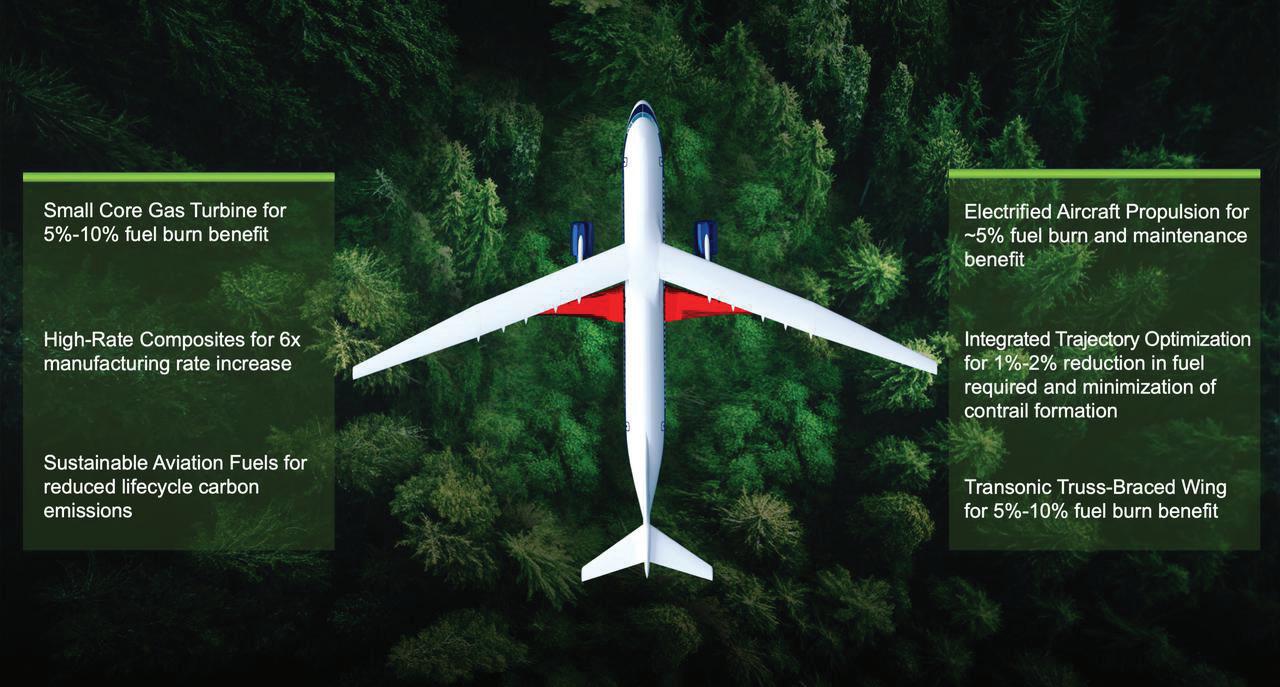
Just a decade ago, electric flight was a distant dream, but today it is a reality with unmanned aerial vehicles (UAVs) and certified two-person small planes taking flight. This is an exciting time to be part of NASA’s aeronautics division and contribute to the advancements driving the electric aviation revolution. While engineering plays a crucial role in developing technologies, the contributions of scientists cannot be overstated. Fields like materials science and chemistry provide the foundation for innovation. Scientists are essential in understanding and optimizing battery technologies, creating sustainable materials, and driving advancements that enable a greener aviation industry. Their expertise and collaboration with engineers are instrumental in bringing ideas from the theoretical realm into practical implementation.
Joining NASA’s aeronautics division offers unparalleled opportunities to be at the forefront of saving the
planet through aviation innovation. Whether as an engineer, scientist, or researcher, individuals can contribute to the development of transformative technologies, such as electric aircraft propulsion systems. The interdisciplinary nature of the work fosters collaboration and requires a diverse range of skills and expertise. By becoming part of NASA’s mission to combat climate change, young professionals can play a vital role in shaping the future of aviation and creating a more sustainable world. With NASA’s commitment to engaging youth and fostering innovation, the journey to save the planet becomes a collective endeavor.
NASA offers various avenues for involvement, including internships, employment opportunities, local events, and collaborations with universities and small businesses. By reaching out to diverse backgrounds and disciplines, NASA aims to cultivate a broader community that will shape the future of the agency and contribute to its mission of saving the planet. Whether one’s passion lies in electrical engineering, aeronautics, materials science, or any related field, there is a place at NASA. S
20 USBE & Information Technology | ENVIRONMENTAL ISSUE 2023 www.blackengineer.com
CORPORATE LIFE
NASA will demonstrate high-risk, high-payoff technology advancements critical for U.S. aerospace manufacturers to bring to market innovative, cost-effective, and sustainable products and services demanded by airlines and customers. Photo courtesy of NASA Video and Image Library




www.womenofcolor.net Like us on Facebook: www.facebook.com/WOCITC Career Communications Group, Inc. 729 East Pratt St., Suite 504 | Baltimore, MD 21202 (410) 244-7101 | www.womenofcolor.net Follow us on Twitter: twitter.com/woctechnology SAVE THE DATE OCTOBER 12-14, 2023 SEE YOU NEXT YEAR! THE WOMEN OF COLOR STEM DIGITAL CONFERENCE WOC DTX - THE DIGITAL TWIN EXPERIENCE #wocstemdtx #wocstem2022
The Critical Role of Water Management in Our Future
 by editors@ccgmag.com
by editors@ccgmag.com
Wateris the essence of life, a crucial resource we often take for granted. Yet, the combination of escalating urban demands, an increasingly unpredictable climate, and widespread contamination has put our precious water resources at a precarious juncture. Dr. Tolessa Deksissa, a pioneering researcher and educator at the University of the District of Columbia, stands at the frontlines of this global challenge. His body of work in the field of water management underscores the intricate tapestry of scientific understanding, engineering prowess, and policy-making that is crucial to safeguard our water resources.
Water management is a multifaceted discipline, a far cry from simply understanding hydrological cycles. It necessitates an appreciation of water’s societal value, an empathetic grasp of its equitable distribution, and a commitment to its conservation and sustainable use.
22 USBE & Information Technology | ENVIRONMENTAL ISSUE 2023 www.blackengineer.com
Managing our water resources is not just an obligation but a testament to our collective commitment to a sustainable future.
Deksissa’s approach to this subject mirrors these values, blending rigorous academic study with the practical elements of policy-making and community engagement.
Deksissa’s research in water quality modeling, a cornerstone of his academic career, offers invaluable insights into pollutant behavior in various water systems. This knowledge is instrumental in devising strategies for water treatment, contamination prevention, and ultimately, securing safe drinking water supplies and preserving the health of aquatic ecosystems.
Moreover, Deksissa’s role as the director of the nationally accredited Environmental Quality Testing Laboratory (EQTL) underscores the real-world impact of his work. The laboratory is a lynchpin for applied science that directly influences lives, offering critical services in water quality analysis, which is key to responding effectively to contamination incidents and guiding water quality-related policy decisions.
However, Deksissa’s vision extends beyond the present. He is acutely aware of the looming shadows of climate change and the impending threat it poses to our water resources. Through his tireless efforts in researching water systems, mentoring future scientists, and promoting water conservation awareness, he actively contributes to building resilience against these future challenges.
From Deksissa’s perspective, effective water management is a collaborative, interdisciplinary endeavor. It demands the participation and insight of a diverse range of stakeholders—scientists, policymakers, community leaders, and citizens alike. By nurturing the next generation of water scientists and engineers, involving the community in conservation initiatives, and spearheading cutting-edge research, Deksissa and his team at the University of the District of Columbia are leaving an indelible mark on this essential discipline.
His work is a stark reminder that water management goes beyond the purview of simple resource distribution. It intertwines with the fabric of our societies, economies, and the very sustainability of our planet. Every droplet conserved, every student mentored, every community educated, and every policy informed by
What’s on Dr. Deksissa’s Bookshelf?
An academic at heart, Dr. Tolessa Deksissa’s reading list reflects his profound interest in water management and sustainable development. Here’s a glimpse into the books he frequently revisits:
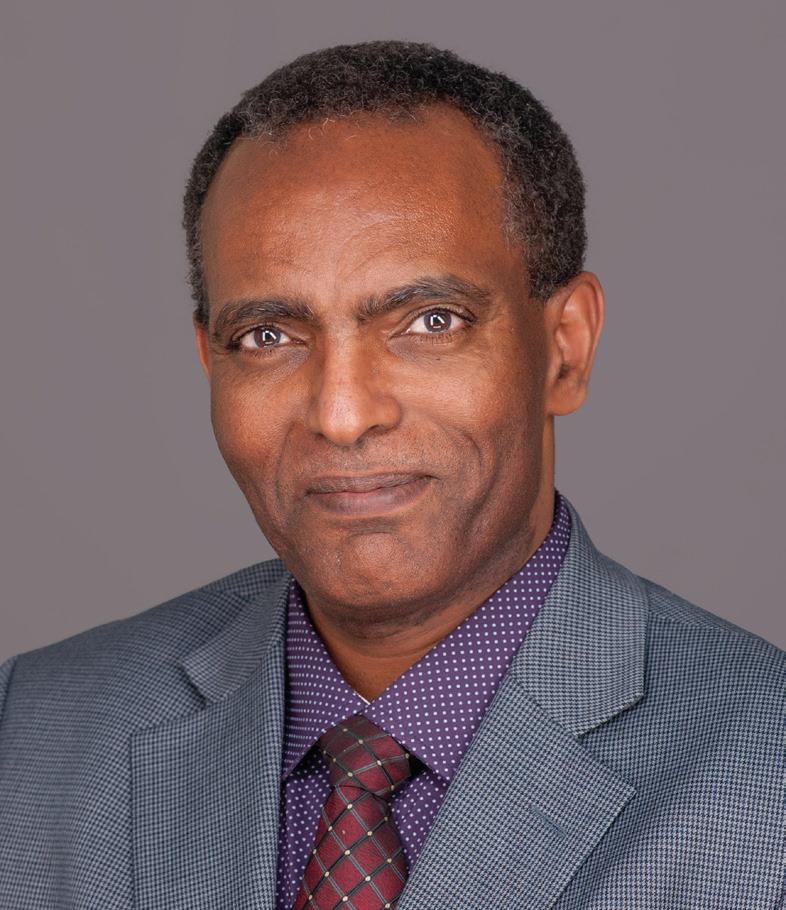
“The Water Will Come: Rising Seas, Sinking Cities, and the Remaking of the Civilized World” by Jeff Goodell. This is an exploration of the imminent threat of sea-level rise due to climate change, a subject directly related to Deksissa’s interests in water management.
Tolessa Dekissa, Ph.D.
Director, Water Resources Research, Environmental Quality Testing Laboratory University of the District of Columbia
science is a stride toward a sustainable water future.

In a world where our water resources are increasingly under threat, Deksissa’s work is not just significant but crucial. The world needs more water leaders like him—individuals who are deeply versed in the complexities of water management, passionately committed to mentoring the next generation, and unwavering in their mission to ensure the sustainability of our water resources. As he leads by example, Deksissa reminds us all of the importance of preserving and managing this life-sustaining resource—for us, our communities, and generations yet unborn. Indeed, water is not just a resource; it is an integral part of our lives, economies, and ecosystems. Our future hinges on our ability to manage it effectively and sustainably. In this endeavor, Deksissa’s work serves as an inspirational beacon, guiding us toward a future where every droplet counts and where water, our most precious resource, is accorded the respect and care it deserves. Through his work, we are reminded of the fundamental truth: Managing our water resources is not just an obligation but a testament to our collective commitment to a sustainable future. S
“When the Rivers Run Dry: Water - The Defining Crisis of the Twentyfirst Century” by Fred Pearce. This book is a deep dive into the global water crisis, combining firsthand reports with well-researched facts. It presents a comprehensive view of the importance of sustainable water management.
“Cadillac Desert: The American West and Its Disappearing Water” by Marc Reisner. Deksissa draws upon the historical analysis in this book to understand the complex relationships between water management, politics, and environmental concerns.
“The Big Thirst: The Secret Life and Turbulent Future of Water” by Charles Fishman. The book sheds light on the looming global water crisis and how society might navigate through it, an essential read for anyone involved in water management.
“The Blue Economy: 10 Years - 100 Innovations - 100 Million Jobs” by Gunter Pauli. This forward-thinking book presents a blueprint for a sustainable economy that effectively utilizes water and other resources.
“The Water Paradox: Overcoming the Global Crisis in Water Management” by Edward B. Barbier. This book analyzes current water policies worldwide and presents an alternative approach to overcoming the global water crisis.
For Deksissa, these books are not merely titles on a bookshelf; they are constant companions in his journey as a water scientist, policy influencer, and educator. They fuel his thirst for knowledge and drive his dedication to innovating in the realm of water management.
23 USBE & Information Technology | ENVIRONMENTAL ISSUE 2023 www.blackengineer.com

FOREST SERVICE CAREERS


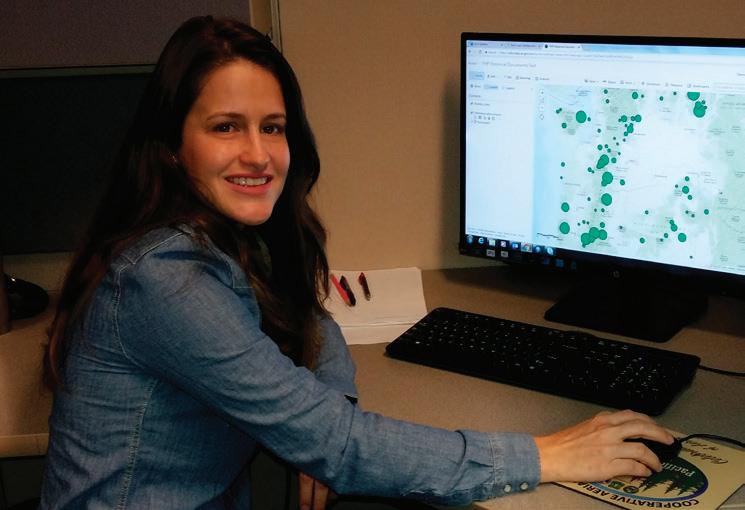


REAL JOBS REAL IMPACT
EXPLORE STEM CAREERS WITH THE
Forest Service U.S. DEPARTMENT OF AGRICULTURE
USDA is an equal opportunity provider, employer, and lender.
FOREST
Get your resume ready! We are hiring for many positions across the Nation this October, including geospatial systems specialists, civil engineers, information technology specialists, and more! Apply on USAJobs.gov Scan the QR code or visit fs.usda.gov/workingwith-us/careers to check out our interactive jobs map and sign up for updates on career opportunities. Make a difference in your community and help steward and conserve the Nation’s forests and grasslands. Connect with the USDA Forest Service during the Women of Color STEM Conference October 12-14, 2023 Detroit, MI
SERVICE
by Lango Deen
‘Each One, Teach One’
HOW HBCUS ARE FOSTERING ENERGY INNOVATION
In October 2019,
Prairie View A&M University (PVAMU) announced that the National Science Foundation (NSF) had awarded its Phase II funding of $5 million to the Center for Energy and Environmental Sustainability (CEES). The total funding for both phases of the center stands at $10 million.
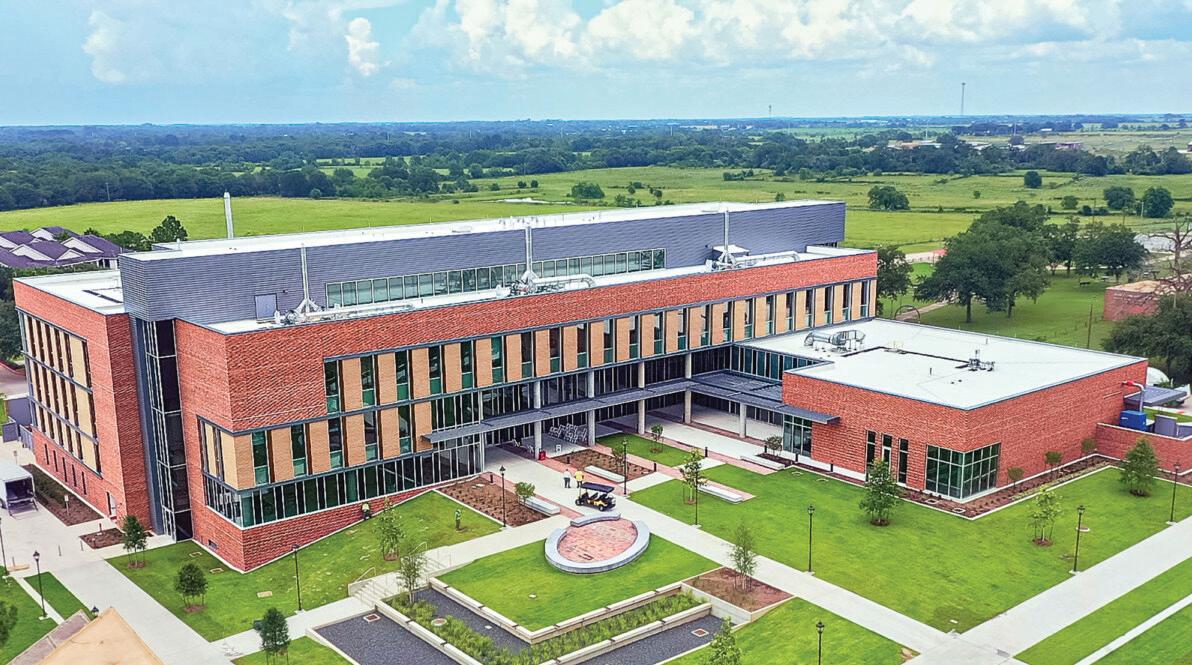
Additionally, the center received $3.7 million in funding from competitive grants from the NSF, U.S. Department of Agriculture (USDA), U.S. Department of Transportation (DOT), and Shell, a global oil and gas company. The goals of the
center funding include:
• Addressing global energy issues.
• Improving PVAMU’s infrastructure.
• Promoting sustainability.
• Encouraging underrepresented science, technology, engineering, and math (STEM) students to enter engineering.
Raghava R. Kommalapati, a Honeywell Endowed Professor in the Department of Civil and Environmental Engineering, principal investigator, and director of the center, assembled a team at PVAMU to achieve these goals. The CEES team includes faculty from the Roy G. Perry College of Engineering, the College of
26 USBE & Information Technology | ENVIRONMENTAL ISSUE 2023 www.blackengineer.com
“We are creating a culture of belonging and learning from each other to understand and appreciate the broad scope of what we are doing. That has been the most satisfying thing .”
BY THE NUMBERS: Outcomes of Phase I
The CEES’ main goal is to conduct research programs in renewable energy and environmental sustainability. Phase I researchers divided their research programs into biofuels, wind energy, and energy and environmental sustainability.
In Phase II, Kommalapati leads an interdisciplinary team that aims to achieve scientific and technological breakthroughs in energy engineering. The team comprises several co-principal investigators from various departments, a technical coordinator, and an education and outreach coordinator. The research was built on Phase I results and expanded the research scope.
“Our Phase II officially started in 2019, but we still had some leftover funds from Phase I, so we filed an extension,” Kommalapati told US Black Engineer magazine in a Zoom interview.
“In Phase I, we had three focus areas: onshore wind energy, biofuels that are added to gasoline, and the third focus area is environmental sustainability, where we looked at different scenarios for an energy portfolio and their ecological impacts. For example, what would happen to the Metro Houston, TX, air quality if we shut down one of the major power plants and generated equivalent wind power elsewhere in South Texas?
“Another focus was creating an energy minor at the undergraduate level and an energy concentration in the Master of Science in Engineering program. Those were the targets, and we met all of them successfully.”
• 9 post-doctoral graduate students work through the CEES.
• 350 graduate students started 23 graduate-level energy-related courses.
• 36 energy-related courses offered, 19 new, were taken up by 700 undergraduate students.
• 176 students who were employed or received scholarships worked on the CEES research program as students or graduate assistants.
• 1,000+ PVAMU students were exposed to the new energy engineering area in the Roy G. Perry College of Engineering.
The new courses included Energy Sustainability, Global Warming and Climate Change, Nuclear Energy, and various courses related to bio energy and wind energy.
“To receive the Phase II award, the PVAMU team has to compete like anybody else in the NSF CREST program,” Kommalapati said. “We chose areas with similar broader themes as phase I. We got into bioenergy, where we grow our energy crops using water that we treat as part of our third focus area, where we use water from fracking operations. We treat that water and then use it to grow energy crops. Biomass from those energy crops produces hydrocarbon fuels directly, meaning they can go directly into a gas tank.”
Arts and Sciences, and the College of Agriculture and Human Sciences. The grant allows the team to broaden the research scope of PVAMU’s Centers of Research Excellence in Science and Technology (CREST) program, which supports enhancing the research capabilities of minority-serving institutions.
After the initial NSF funding, there were more grants from the USDA, the Department of Energy, and the DOT’s University Transportation Centers program, which advances transportation research and technology and develops next-generation transportation professionals.
‘Making fossil fuels a little more sustainable’
During USBE’s conversation with Kommalapati in 2021, he mentioned that the center is focused on increasing the sustainability of energy generation and wastewater treatment processes. A major issue with hydraulic fracking
Honeywell Endowed Professor Director, NSF CREST Center for Energy & Environmental Sustainability Professor, Department of Civil and Environmental Engineering
Roy G. Perry College of Engineering, Prairie View A&M University

27 USBE & Information Technology | ENVIRONMENTAL ISSUE 2023 www.blackengineer.com
Raghava R. Kommalapati, Ph.D.
operations, a significant source of oil and gas in Texas, is the massive amounts of water used daily to pump oil and gas. This results in contaminated water that cannot be reused, leading to deep well injection, which causes increased seismic activity in Texas and Oklahoma.
CEES researchers are cleaning this water through membrane processes to make it usable for agriculture or other water applications, including fracking water. Another project involves treating wastewater used in poultry meat processing to reuse. They use about 1 million gallons of water at these plants, and if they can treat this water, then they do not need fresh water each time. These
sustainability research aspects reflect the center’s ongoing efforts.
In addition, researchers are examining the structural safety and reliability of offshore wind turbines. Sensors are used on these platforms, and the data collected is analyzed using data science and machine learning techniques to enhance their reliability.
The professor also aims to establish a new Master of Science with Energy Concentration in Phase II and expand research opportunities for undergraduate and graduate students.
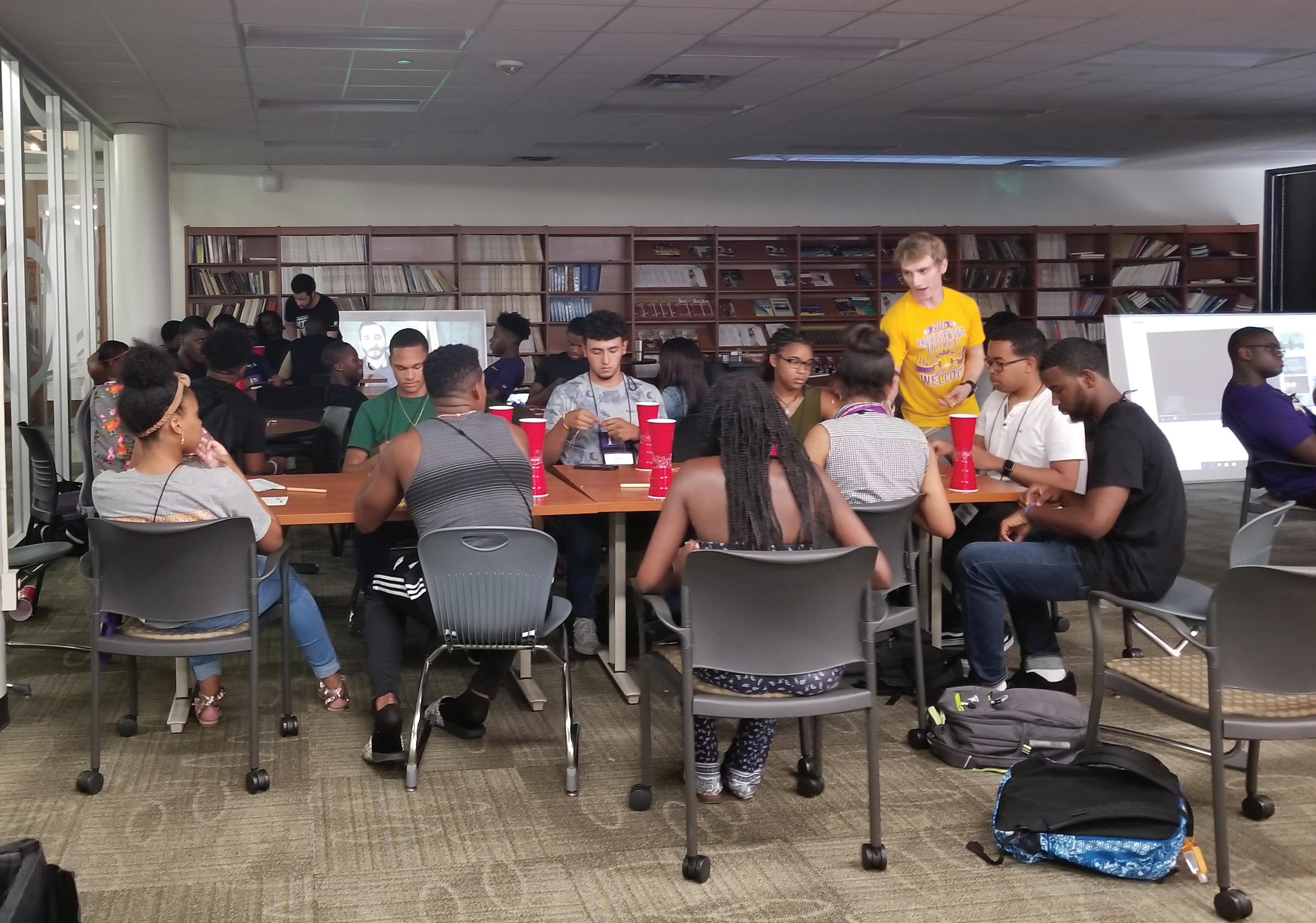
The center also aims to enhance its partnerships with different industries to become a national resource. Over the past few years, it has collaborated with oil and gas companies on carbon capture and sequestration. It has a major project with another company and is currently
negotiating with one to do some research work.
“These are all direct results of our Phases I and II work,” Kommalapati said. “We are excited because our external advisory board wanted us to develop the expertise and then go out to get industry collaborators to come in and work with. We are very happy that we have been able to do that.”
PVAMU is a part of the Texas A&M University Engineering Experiment Station (TEES) initiative funded by the nation’s energy and interior departments, a $40 million consortium started about a year and a half ago called the Ocean Energy Safety Institute. As part of this body, the historically Black college and university can compete on a level playing field for research funding.
28 USBE & Information Technology | ENVIRONMENTAL ISSUE 2023 www.blackengineer.com
Student Collaboration in the new Energy Success Center
Reflections
Reflecting on the high points of Phase I and II, Kommalapati said faculty and students had learned so much about themselves over the last seven years. For his part, there has been added value in getting center grants as opposed to various faculty applying for separate departmental grants.
“The difference is we create a dedicated research culture within our center because of the umbrella type of organization that we were able to create with the funds from NSF,” he explained. “That gives us the added benefit of having a bunch of students working in the labs, sitting next to each other. They may be working on different problems, but we created a culture that only exists in major universities, which have several labs with students learning from each other,” the Honeywell Endowed Professor said.
“That doesn’t happen in small colleges like ours. But CEES provided that opportunity, where we are creating that culture of belonging and learning from each other—understanding and appreciating the broad scope of what we are doing. That has been the most satisfying thing for me.
“Because when I was a grad student,
EDUCATION AND OUTREACH
Engineering courses must have strong prerequisites, but since 2010, the center has worked with various departments to offer comprehensive energy courses useful for engineering students and those in the College of Agriculture and Human Sciences and the College of Arts and Sciences. To encourage more students, PVAMU has scholarships for pursuing these courses, which might lead to an energy engineering minor.
In addition, the center has visited high schools in the local area and, over four years in a row, has participated in the Energy Day event in Houston. Energy Day is a free festival with 70 demos and exhibits. It educates families on energy, STEM, and careers in those fields. Students can meet experts and explore their interests.


Officially, the cutoff date for Phase II is 2024. Still, since the Phase II funding was received during the pandemic, which rolled back most things on university campuses, the end date may be extended with no cost with review and approval by the NSF. Before Phase II cuts off, the CEES will go back seven years and collect data on where their students are now, at least tracking those that received financial support from the center.
I was surrounded by a bunch of grad students, and I was learning mostly from them and everybody else working around me in the labs. It’s a beautiful thing to see.” S
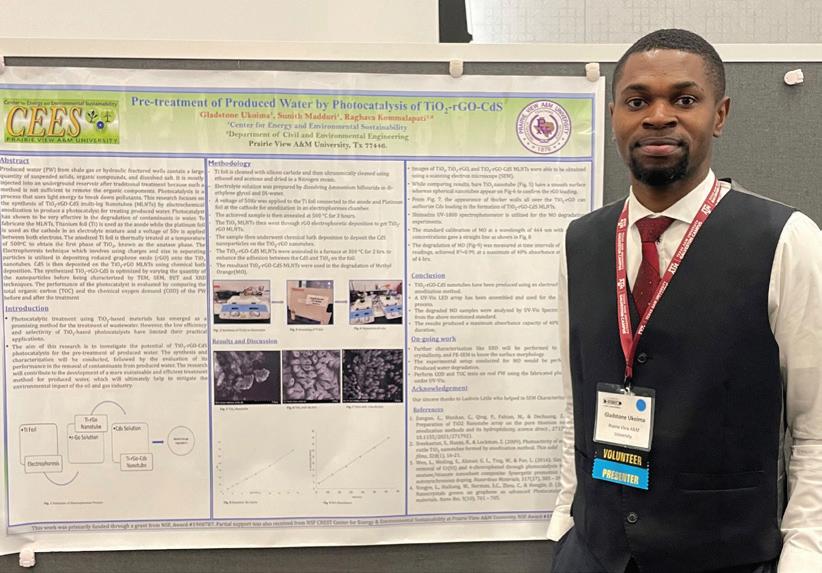
29 USBE & Information Technology | ENVIRONMENTAL ISSUE 2023 www.blackengineer.com
“When I was a graduate student, I was surrounded by a bunch of graduate students, and I was learning mostly from them and everybody else working around me in the labs. It is a beautiful thing to see.”
PVAMU students at Houston Energy Day event
PVAMU student, Gladstone Ukioma, poster winner
by ccgeditors@ccgmag.com
The Interconnected Planet: Understanding the Realities of Climate Change
Renowned climate scientist PATRICK TAYLOR, based at NASA Langley Research Center, offers profound insights into the current state of our planet at a recent seminar hosted by Career Communications Group’s US Black Engineer magazine. Taylor’s enlightening insights as a climate scientist at NASA shed light on the interconnectedness of our planet and the urgent need to combat climate change. The evidence
presented, from the loss of sea ice and the melting of land ice to the increasing occurrence of extreme weather events, reinforces the importance of taking proactive measures. By understanding the greenhouse effect and the power of collective action, we can work toward curbing carbon pollution and safeguarding the well-being of our planet and future generations.

THE INTERCONNECTED PLANET, CLIMATE SCIENCE, AND THE POWER OF DATA
Taylor began his talk by emphasizing how choices made in one part of the world can have global repercussions. Using NASA’s Group on Earth Observations (GEO) modeling system, Taylor provides compelling visuals of atmospheric interactions, such as the dispersion of Sahara dust particles over the Atlantic
30 USBE & Information Technology | ENVIRONMENTAL ISSUE 2023 www.blackengineer.com
Peering into the thousands of frozen layers inside Greenland’s ice sheet is like looking back in time. Each layer provides a record of what Earth’s climate was like at the dawn of civilization, or during the last ice age, or during an ancient period of warmth similar to the one we experience today. Scientists using ice-penetrating radar data collected by NASA’s Operation IceBridge and earlier airborne campaigns have built the firstever comprehensive map of layers deep inside the Greenland Ice Sheet. Credit: NASA’s Goddard Space Flight Center
View the full video:
Ocean and the exchange of air masses between different regions. These examples illustrate Earth’s interconnected systems and underscore the importance of collective action.
Taylor reflects on his personal journey as a climate scientist, tracing his childhood fascination with clouds. He shares how this fascination grew into a deeper understanding of clouds’ crucial role in the climate system. As he delved further
into scientific research, Taylor realized that climate change was not an abstract concept but a reality with significant
amounts of data. Taylor emphasizes the significance of NASA’s Earth-observing fleet, consisting of over 20 satellites that monitor key climate indicators, such as temperature, clouds, sea level, and ice. These satellites offer a comprehensive perspective on Earth’s climate, enabling scientists to track long-term changes. Taylor cites compelling evidence, such as the global surface temperature record and the alarming decline in Arctic Sea ice, underscoring the urgency for action.
CLIMATE LITERACY AND SOCIETAL IMPACT
Taylor stresses the importance of climate literacy across all sectors of society. As climate change increasingly pervades our lives, its impacts touch every aspect, including agriculture, water management, energy consumption, and public health. Taylor urges individuals to grasp the implications of climate change within their professional domains, as this knowledge forms the foundation for resilient decision-making and adaptation strategies.
The mass of the Greenland ice sheet has rapidly declined in the last several years due to surface melting and iceberg calving. Research based on observations from the Gravity Recovery and Climate Experiment (GRACE) satellites (2002–2017) and GRACE Follow-On (since 2018) indicates that between 2002 and 2020, Greenland shed approximately 280 gigatons of ice per year, causing global sea level to rise by 0.03 inches (0.8 millimeters) per year.

implications for our lives. He highlights the vulnerability of critical systems, like food, water, energy, and health, emphasizing the need to comprehend and predict climate change for societal resilience.
NASA’s role in climate research hinges on its ability to collect and analyze vast
Although climate change presents formidable challenges, Taylor injects hope into the discussion. He highlights the transformative power of knowledge and collective action, emphasizing that even small steps can yield significant outcomes. Skillful predictions based on robust climate research facilitate better planning, cost savings, and improved safety measures. Taylor encourages individuals to embrace optimism and
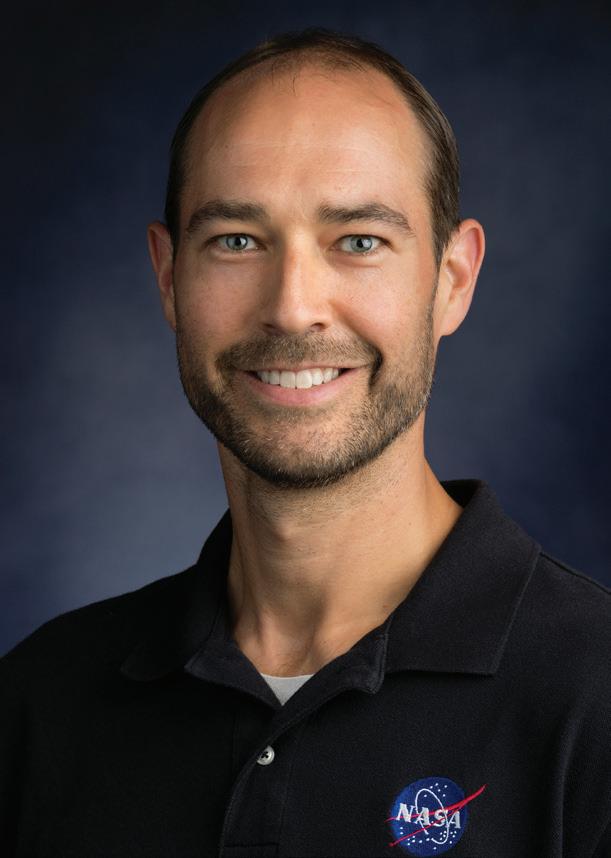
31 USBE & Information Technology | ENVIRONMENTAL ISSUE 2023 www.blackengineer.com
Patrick Taylor, Climate Scientist NASA Langley Research Center
NASA’S ROLE IN CLIMATE RESEARCH HINGES ON ITS ABILITY TO COLLECT AND ANALYZE VAST AMOUNTS OF DATA.
On June 15, 2016, the Advanced Land Imager (ALI) on NASA’s Earth Observing-1 satellite acquired a natural-color image of an area just inland from the coast of southwestern Greenland (120 kilometers southeast of Ilulisat and 500 kilometers north-northeast of Nuuk). According to Marco Tedesco, a professor at Columbia University’s Lamont Doherty Earth Observatory, melting in this area began relatively early in April but was not sustained. It started up again in May and grew into the watery June scene pictured above.
ecosystems, weather patterns, and the distribution of plant and animal species. While climate warming is a prominent aspect of climate change, it is crucial to recognize that climate change encompasses broader changes in Earth’s climate system beyond just temperature. Climate change includes alterations in precipitation, wind patterns, ocean currents, and other factors that influence the overall climate.
Understanding the difference between climate change and climate warming helps us grasp the multifaceted nature of the challenges we face. By comprehending these terms, we can engage in informed discussions and actions to address the complex issues related to our changing climate.
THE POWER TO MAKE A DIFFERENCE
recognize their agency in shaping a sustainable future.
Taylor highlights the staggering extent of change occurring in our planet’s polar regions. He reveals that in the past four decades, we have lost over four times the land area of Texas in sea ice alone. Furthermore, Taylor draws attention to the melting of land ice, particularly the Greenland ice sheet. NASA’s GRACE data shows that since May 2002, Greenland has lost an average of approximately 279 gigatons of ice per year. This loss accounts for about 25 percent of global sea-level rise, with recent years witnessing even more significant changes.

CLIMATE CHANGE VS. CLIMATE WARMING
It is essential to distinguish between two important terms: climate change and climate warming. While they are related, they refer to different aspects of the Earth’s climate system.
Climate change encompasses a broader understanding of long-term shifts in various aspects of Earth’s climate, including temperature, precipitation patterns, wind patterns, and more. It recognizes that our planet’s climate is not static and undergoes natural variations over extended periods. However, climate change also refers to the significant alterations occurring in
recent decades, primarily attributed to human activities.
Climate change encompasses both natural and human-induced factors. Natural causes include volcanic eruptions, variations in solar radiation, and Earth’s orbital changes. Human activities, such as the burning of fossil fuels and deforestation, contribute to climate change by increasing greenhouse gas emissions. These gases trap heat in the atmosphere, leading to a warming effect known as the greenhouse effect. Climate warming specifically refers to the rise in average global temperatures over a prolonged period. It is a consequence of climate change, resulting from the increased concentration of greenhouse gases in the atmosphere. As these gases accumulate, they trap more heat, leading to a gradual rise in temperatures worldwide.
Climate warming manifests in various ways, including the melting of glaciers and ice caps, rising sea levels, and shifts in precipitation patterns. It affects
In the face of these pressing challenges, it’s crucial to question what we are doing to our planet and how we can make a positive impact. Taylor instills hope by emphasizing that we have the power to change the course of climate change. By ceasing the pollution of carbon dioxide, we can prevent further accumulation of energy and mitigate the adverse effects of climate change. The decisions we make as individuals, communities, and nations matter.
The need for collective action is more urgent than ever. We must hold ourselves accountable and demand responsible environmental policies and practices from governments and corporations. By adopting sustainable practices, embracing renewable energy sources, and supporting initiatives aimed at reducing greenhouse gas emissions, we can contribute to a cleaner and healthier future.
It is imperative that we question our actions and take responsibility for the impact we have on the Earth’s climate system. Together, we can create a sustainable and resilient future for all. Let us actively engage in discussions, educate ourselves and others, and demand action from those in power. Our choices today will shape the world we inherit tomorrow. The time to act is now, as every ton of carbon pollution contributes to further climate change and its wide-ranging impacts. Let us be the generation that makes a difference. S
32 USBE & Information Technology | ENVIRONMENTAL ISSUE 2023 www.blackengineer.com
OUR CHOICES TODAY WILL SHAPE THE WORLD WE INHERIT TOMORROW.

Career Communications Group, Inc. | 729 East Pratt St., Suite 504 | Baltimore, MD 21202 | (410) 244-7101 | www.ccgmag.com Calling all employers Are you an employer looking for great ways to share your company's new job opportunities for an incredible career in STEM? If you are ready, visit www.ccgjobmatch.com Let us help you! Post job openings Connect with qualified candidates Become a featured employer
An Interview With Yolanda Shea:
CLARREO Pathfinder’s Project Scientist
by Tyrone Taborn
Recently, US Black Engineer magazine sat down with Yolanda Shea, project scientist and science lead for the Climate Absolute Radiance and Refractivity Observatory Pathfinder (CLARREO-PF), to discuss her role in this groundbreaking NASA mission. Her insights provide a glimpse into the vital role that reflective sunlight measurements play in unraveling the complexities of our planet’s climate system. With CLARREO Pathfinder’s launch on the horizon, the future looks brighter in our quest to comprehend Earth’s changing climate. That’s why Shea is working to share her passion for climate science and diversity in climate science.

USBE: Could you tell us about your role in the CLARREO Pathfinder project and what it aims to achieve?
Project Scientist/Science Lead
The Climate Absolute Radiance and Refractivity Observatory Pathfinder (CLARREO-PF)
Yolanda Shea: Certainly! As the project scientist for CLARREO Pathfinder, my main responsibility is to lead the scientific efforts of the team. CLARREO Pathfinder is an instrument that will be installed on the International Space Station, and its primary goal is to measure the sunlight reflected by Earth. By capturing this reflected light, we can gain valuable insights into Earth’s climate system and better understand the changes occurring due to greenhouse gas emissions. The instrument provides unprecedented accuracy and aims to contribute to a clearer understanding of our planet’s climate puzzle.
 Yolanda Shea
NASA’s Earth Observing System, NASA Langley
Yolanda Shea
NASA’s Earth Observing System, NASA Langley
34 USBE & Information Technology | ENVIRONMENTAL ISSUE 2023 www.blackengineer.com
UNLOCKING EARTH’S CLIMATE SECRETS WITH REFLECTIVE SUNLIGHT
USBE: Reflective sunlight plays a crucial role in understanding Earth’s climate. Could you explain its significance and how CLARREO Pathfinder contributes to this knowledge?
Yolanda Shea: Reflective sunlight is like a piece of the puzzle when it comes to Earth’s climate system. By measuring the reflected light, we can decipher crucial information about cloud properties, land surface reflectance, and other physical aspects of Earth’s climate. CLARREO Pathfinder, with its advanced capabilities, acts as our eyes in space, allowing us to see even more than what our human eyes can discern. It captures measurements in multiple wavelengths, providing a 4K high-definition view of Earth. This level of accuracy and detail is essential for understanding climate changes and their impacts.
REFLECTIVE SUNLIGHT IS LIKE A PIECE OF THE PUZZLE WHEN IT COMES TO THE EARTH’S CLIMATE SYSTEM.

CLARREO PATHFINDER IS AN INSTRUMENT THAT WILL BE INSTALLED ON THE INTERNATIONAL SPACE STATIOM, AND ITS PRIMARY GOAL IS TO MEASURE THE SUNLIGHT REFLECTED BY THE EARTH.


35 USBE & Information Technology | ENVIRONMENTAL ISSUE 2023
THE ROLE AND EXCITEMENT OF A PROJECT SCIENTIST
USBE: As the project scientist, what are your primary responsibilities, and what excites you the most about CLARREO Pathfinder?
Yolanda Shea: My main role is to ensure the success of the project by leading the scientific efforts of the team. This involves overseeing the research, coordinating with team members, and ensuring that we have the necessary resources. What excites me the most about CLARREO Pathfinder is the unprecedented level of accuracy it offers. This instrument will significantly enhance our understanding of Earth’s changing climate. By having a clearer view of these changes, we can provide policymakers with crucial information to guide their decisions and responses.
TEAMWORK IN SPACE: COLLABORATIVE CLIMATE RESEARCH
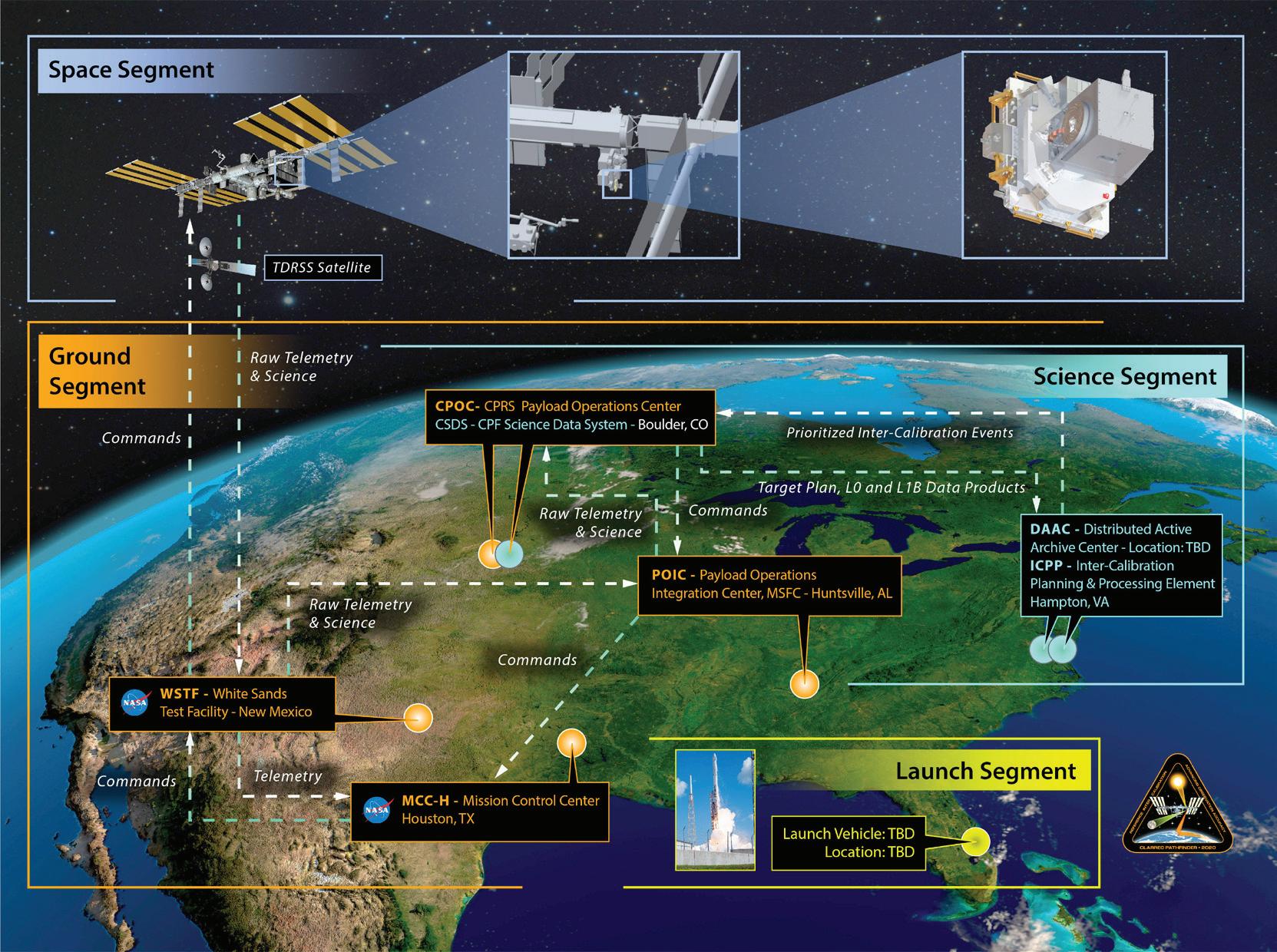


USBE: Could you elaborate on the collaboration between CLARREO Pathfinder and other instruments taking measurements of reflected sunlight?
Yolanda Shea: Collaboration is key in understanding Earth’s climate system. While CLARREO Pathfinder provides exceptional accuracy, we recognize that no single instrument can capture the whole story. We collaborate with other state-of-the-art instruments to improve the accuracy of their measurements as well. By sharing our high-precision data, we strengthen the collective effort to understand Earth’s climate comprehensively. This collaboration among instruments ensures that we have a clearer, more accurate picture of the changes occurring in our climate.
36 USBE & Information Technology | ENVIRONMENTAL ISSUE 2023 www.blackengineer.com
WHAT EXCITES ME THE MOST ABOUT THE CLARREO PATHFINDER IS THE UNPRECEDENTED LEVEL OF ACCURACY IT OFFERS.
WE COLLABORATE WITH OTHER STATE-OFTHE ART INSTRUMENTS TO IMPROVE THE ACCURACY OF THEIR MEASUREMENTS AS WELL.
INSPIRING THE NEXT GENERATION: ADVICE FOR FUTURE SCIENTISTS
USBE: As an experienced scientist, what advice do you have for high school students interested in studying Earth science and joining NASA programs?

Yolanda Shea: I’m always excited to encourage young students to pursue their interests in Earth science and NASA programs. There are several avenues for involvement, such as the NASA Globe citizen science program, where students can contribute their own measurements. Additionally, internships at NASA, available at various levels, offer valuable hands-on experience. It’s important to have a solid foundation in subjects like math, physics, and computer science since they are integral to Earth and climate science. However, even if you’re not specifically interested in STEM fields, there are opportunities to support NASA’s mission through storytelling, law, funding management, and more.
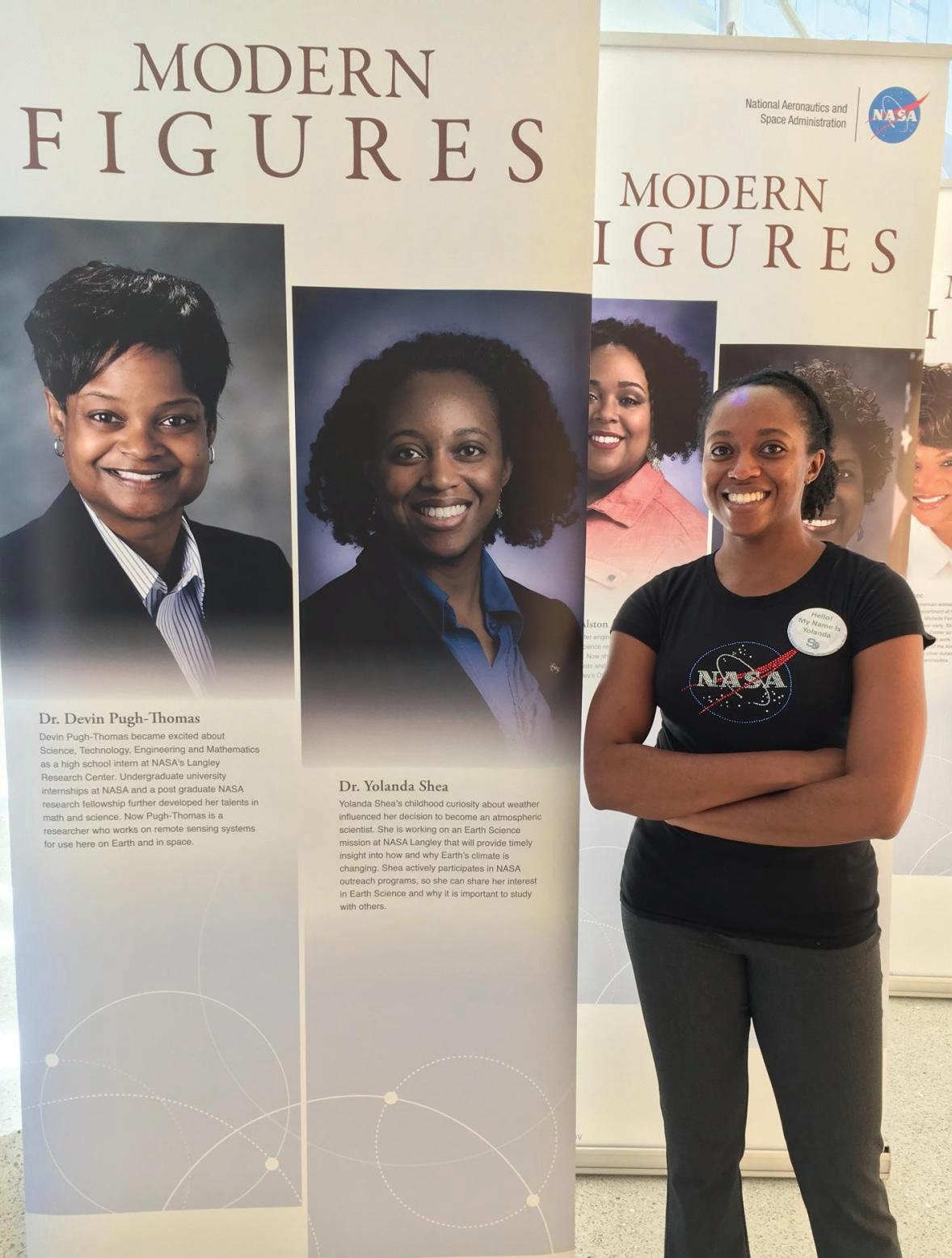
MY JOURNEY AS A CLIMATE SCIENTIST BEGAN WITH A CHILDHOOD FASCINATION WITH WEATHER AND CLOUDS.
IT’S IMPORTANT TO HAVE A SOLID FOUNDATION IN SUBJECTS LIKE MATH, PHYSICS, AND COMPUTER SCIENCE SINCE THEY ARE INTEGRAL TO THE EARTH AND CLIMATE SCIENCE
THE JOURNEY OF A CLIMATE SCIENTIST
USBE: Could you share a bit about your personal journey as a climate scientist and what sparked your interest in this field?
Yolanda Shea: My journey as a climate scientist began with a childhood fascination with weather and clouds. I was particularly intrigued by thunderstorms and closely followed weather updates. This interest in weather developed into a broader curiosity about the Earth’s climate system and how different pieces of the puzzle fit together. I pursued my studies in this field, and after obtaining my Ph.D., I joined NASA Langley, where I’ve been working for the past 10 years. It’s been an incredible journey, and I’m grateful to have the opportunity to contribute to our understanding of Earth’s climate.
THERE ARE DIVERSE OPPORTUNITIES WITHIN NASA FOR INDIVIDUALS WITH WITH DIFFERENT SKILLS AND INTERESTS, ALL OF WHICH CONTRIBUTE TO OUR UNDERSTANDING OF EARTH AND SPACE EXPLORATION..
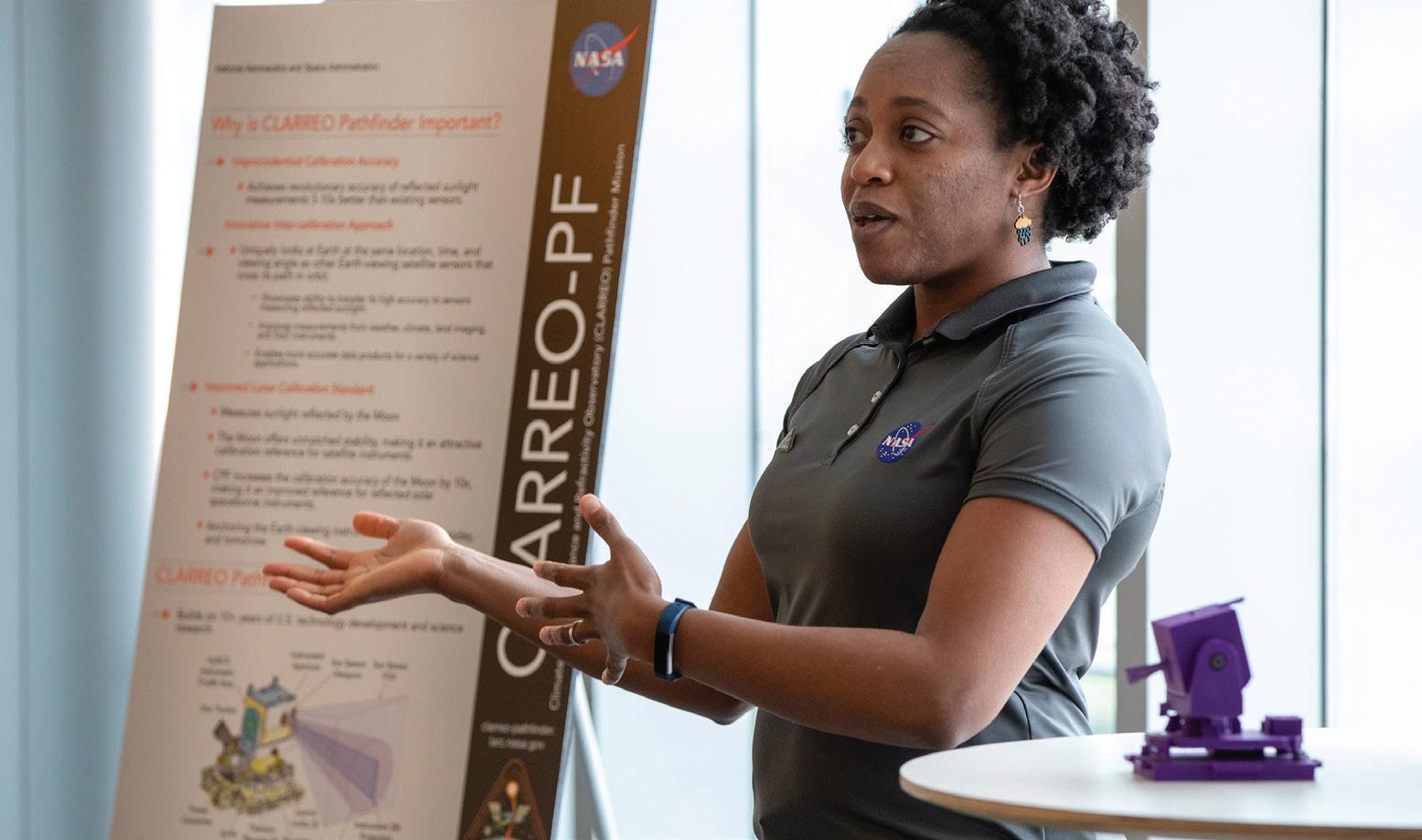
A FINAL WORD: OPPORTUNITIES IN EARTH SCIENCE
USBE: Are there any final thoughts you’d like to share with our readers?
Yolanda Shea: I would like to emphasize that studying Earth science and supporting STEM efforts extend beyond scientific roles. There are diverse opportunities within NASA for individuals with different skills and interests, all of which contribute to our understanding of Earth and space exploration. Whether you’re interested in science, law, communication, or any other field, there is a place for you in advancing our knowledge and protecting our planet. S
37 USBE & Information Technology | ENVIRONMENTAL ISSUE 2023
US Black Engineer & Information Technology (USBE&IT) magazine launched the maiden issue of Leading Voices (LV) in the fall of 2017. Broken up into three or four columns written by inventors, entrepreneurs, and STEM policymakers, the section spotlights the 14 challenges outlined by the National Academy of Engineering, and disruptors such as artificial intelligence and bioengineering. LV has provided perspectives on smart cities, building a weather-ready nation, and where AI is in your future. An auspicious start for one of USBE magazine’s newest sections. Leading Voices is available in print and online at www.blackengineer.com
Leading Voices
Contributing Editors
Henry McKoy Director Office of State and Community Energy Programs U.S. Department of Energy
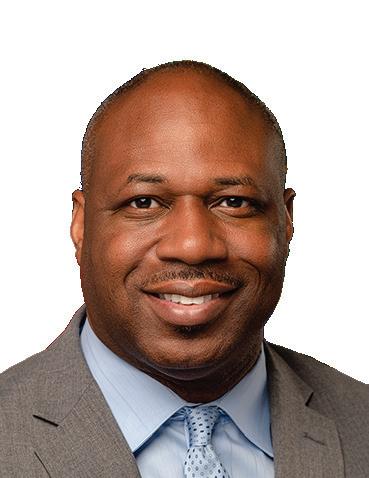 Larry Laws Director of Utility Training BGE
Larry Laws Director of Utility Training BGE
Creating Change Through the U.S. Office of State and Community Energy Programs
The$1 trillion Bipartisan Infrastructure Law (BIL) that was passed in November 2021 had a strong focus on deployment, particularly around infrastructure and climate. As federal officials tried to determine the best avenue to deploy resources into communities across the United States in an equitable way, the Department of Energy (DOE) seemed to be the best, most natural fit.
A new office was created within the DOE under the new undersecretary for infrastructure. It’s called the U.S. Office of State and Community Energy Programs (SCEP), and I am the inaugural director. I started in July of 2022 to build a team and organize an office that would develop strategies for deploying BIL resources. Three weeks after I began this role, the Inflation Reduction Act (IRA) was passed. So I went from having $6 billion from the Bipartisan Infrastructure Law and some annual appropriations, to having a total of $16 billion after the IRA passed. With those funds, I plan on working with my team to get resources out in ways that haven’t been available or utilized before SCEP was instituted. And, through my office, the DOE will have direct interfacing with thousands of communities and local governments on a very meaningful level to meet them where they are. Done well, we’ll be able to deploy clean energy investments in ways that will create farreaching and long-lasting outcomes for hundreds of millions of Americans.
There are a number of programs under SCEP that cover a comprehensive view of what local communities need. These community energy programs consist of nearly 30 different programs within different pillars. One of them is the Weatherization Assistance Program (WAP), which has been around for 47 years or so. We have allocated $3.5 billion to help low-income households become more energy efficient. We invest in every county in the country to make sure that their low-income populations have access
to resources to make their homes more energy efficient, cooler in the summer, warmer in the winter, etc.
Our State Energy Program (SEP) invests in all 50 states, five territories, and Washington, D.C., annually and allows state leaders to focus on what’s important to them to get their work done. That could be electric vehicles, grid maintenance, or planning. The Bipartisan Infrastructure Law has provided SCEP with $810 million for that work. We’re also investing in helping every state, territory, and D.C. set up a green revolving loan fund. $250 million goes toward setting up those green banks around the country. SCEP’s third pillar is the Community Energy Program (CEP), which has about $1.2 billion in it. That includes provisions such as $550 million for the Energy Efficiency Conservation Block Grant Funds (EECBG). These funds go out to 1,878 local governments, 745 tribal nations, 50 states, five territories, and D.C. We are going to touch over 2,700 grantees with those resources. We also have $500 million going out to school districts, particularly low-income districts, to help those schools upgrade their facilities and reduce their energy burden. This creates more resources to invest back into the students and provides a great opportunity to introduce students to jobs in the clean energy sector. Another $50 million helps nonprofit organizations upgrade their buildings to be more efficient and reduce their energy costs, which we hope will lead to more money to dedicate to their mission and community impact.
We round the Community Energy Program out with a couple of other programs. We have a new Local Government Energy Program (LGEP) that will put $22 million on an annual basis into local governments to come together with diverse stakeholders to create their idea of the work future their communities will have. That could include the school district, local university, economic development partners, etc. We also have a $47 million
38 USBE & Information Technology | ENVIRONMENTAL ISSUE 2023 www.blackengineer.com
Henry McKoy, Director, Office of State and Community Energy Programs U.S. Department of Energy
Energy Futures Grant (EFG) program that invests in multi-jurisdictional projects to transform communities through energy innovation. Another $260 million will go into workforce development because we will need qualified people to install needed upgrades and things of that nature. We want to make sure we have strong investments at the state and community levels to do that equitably. That will require a much more diverse workforce of employees AND business owners. That’s where wealth is created. We want to make sure we lay the groundwork from a standpoint of wealth creation to create companies, organizations, etc.
Our largest pillar is Partnerships and Technical Assistance (P&TA). $10.1 billion in that pillar goes toward a couple of things.
The “partnership” element is a way for state and local governments to connect and learn from each other to share best practices. The “technical assistance” element allows us to go into areas that lack capacity and offer resources to better understand a new technology or new approach to a challenge they didn’t have before. There’s also $8.8 billion in Inflation Reduction Act Home Rebates, which helps low- to moderate-income households and tribes “electrify” their households and bring new appliances, heat pumps, and new technology into their homes to make them more efficient. $1 billion has been set aside for states and local governments to use to update building codes and standards so people can get access to permits to build energy-efficient homes and other energy projects. All of these initiatives make up the $16 billion under our SCEP umbrella.
As the inaugural director of SCEP, and as the first African American in the DOE to lead a deployment office, I am honored to have been asked by President Joe Biden to take such a position. I do it with a great sense of humility, but I also do it with the goal of doing right by the everyday person. With a bachelor’s degree in business administration, a master’s in environmental policy, a Ph.D. in city regional planning and economic development, and a career in the banking sector, my professional and academic backgrounds have both prepared me well for this. As a banker, I learned how to use money as a resource to make a difference in people’s lives and in the community. Spending 10 years as a banker, working my way up the ladder, and ultimately leading multibillion-dollar organizations certainly laid the foundation for running SCEP. But I left banking after a decade because I felt there was so much more to do, particularly when it comes to getting resources to underrepresented minority entrepreneurs and communities. That is a key part of what I want to do in this role. My primary question is: How can I make sure these resources go into communities in an equitable way? When I transitioned out of banking, I set up my own investment firm focused on the notion of investing in communities that have historically been left behind. I wanted to create entrepreneurship and wealth in ways that produced more sustainable communities. Those ideas tie directly into the work I do now on an everyday basis. We look at how to take these resources and broadly invest them in communities—not solely lowincome communities, but that’s certainly a key part of our stakeholder base that we want to invest in. So, my time as an entrepreneur allowed me to transfer those skills to this role. Technically, SCEP is like a startup—a startup with a lot of money. I have to be entrepreneurial every day, navigate how to create something that didn’t exist before, set goals, and often pivot very quickly. Other professional experiences—as a former assistant secretary of commerce at the state level and as a college professor—have rounded out perspectives that allow me to lead SCEP.
I have a personal saying: I don’t like to think without doing, and I don’t like to do without thinking. That notion helps me facilitate human-centered design thinking, which puts people at the forefront of any creative idea or project. Creating and implementing policy is no different. There is absolutely no way we can create an equitable policy and deployment strategy without putting “people’’—particularly those who historically get left behind—in the center of that.
President Biden’s Justice 40 Executive Order states we must aim for 40 percent of the benefits from these programs to go to historically disadvantaged communities. I say that’s the floor, not the ceiling. I understand the plight of our underprivileged communities because I grew up in one. I came from a low-income background and grew up on welfare. I was a free-lunch kid. From the time I was born until age 5, I lived in a house with no indoor plumbing. It was basically a four-room shack. From ages 5 to 15, I lived in a house slightly larger, that had indoor plumbing but no hot water. I understand from personal experience why this work is so important. I lived with and around the people that are affected every day. These are good, hardworking people dealing with many of life’s challenges, and they deserve support like anyone else. That’s the change I’m working to create with SCEP.
Our success will be measured by how much we ultimately walk our talk and bring lasting change to America’s communities. If we deploy these resources but haven’t transformed our communities in the process, that isn’t success in my book. We must leave something behind in these communities, particularly in our historically disadvantaged and underrepresented communities, that’s going to keep generating resources well into the future. That looks like creating jobs and opportunities to develop lasting and broad-based wealth. It also looks like creating and fostering a clean energy economy with diverse representation. That’s what America can—and should— look like. S
39 USBE & Information Technology | ENVIRONMENTAL ISSUE 2023 www.blackengineer.com Leading Voices
“Our success will be measured by how much we ultimately walk our talk and bring lasting change to America’s communities.”
My Journey in the Energy Field: Overcoming Challenges and Making a Difference
Growing up in the heart of West Baltimore, my aspirations were often overshadowed by the challenges surrounding me. The things I thought I wanted as a child—the nice cars, clothes, jewelry—were only achievable through a certain lifestyle. For a young Black man, that lifestyle also came with many risks. However, a pivotal moment occurred when my mother enrolled me in a Baltimore City Swim Club as a child. Joining the team exposed me to different groups of people, including other African-American swimmers competing against a predominantly white swimming community. Witnessing the disparities in access and opportunities ignited my curiosity. I questioned whether those lifestyles were different from those on the street corners. The answer became clear—these individuals had jobs and careers and lived a different kind of life.
After completing high school, I enlisted in the Army. This experience allowed me to meet people from all walks of life across the country. Interacting with other Black people who lived different lives and had diverse lifestyles broadened my perspective. It fueled my desire to seek a better life for myself and led me to realize that if this newfound awareness could transform my own mindset, I could help others improve their lives as well.
Like many others, transitioning from the military to the civilian workforce was an adjustment. I began my career in meter measurement for a Baltimore-based company making $12 an hour. As one of only two Black employees at the time, I encountered a manager who used biased and disrespectful language, leaving me disheartened and realizing that I needed to pursue a more inclusive environment. Opportunity knocked when I secured a position with Northrop Grumman, where I had the chance to travel and nurture my passion for leadership. Soon after, I embarked on a journey with Baltimore Gas and Electric (BGE), starting as a trainee. Encouragement from my

supervisors, who believed in my potential to become a supervisor one day, provided the motivation I needed to forge ahead. As I progressed within the company, my leadership skills were recognized and valued. This led me to have a pivotal conversation with the recruiting team about addressing the lack of diversity in our workforce.
involves empowering and uplifting others. By actively working to diversify our workforce and providing opportunities for underrepresented communities, we are creating a more inclusive and equitable energy industry.
The future of opportunity in the energy industry is incredibly promising. With the electrification wave on the horizon, as emphasized by President Joe Biden’s goal of achieving a carbon pollution-free power sector by 2035 and a net-zero emissions economy by 2050, innovation becomes paramount.
At BGE, we have established Innovation Central, a dedicated team that encourages and rewards team members for contributing ideas that enhance our operations across the board. We are exploring the potential of existing tools, such as the metaverse and drones, to improve our processes.
I proposed contacting historically Black colleges and universities (HBCUs) to attract talented individuals from underrepresented communities. I also suggested forming partnerships with vocational high schools, starting with my alma mater, Emerson Westside High School. In order to find the diverse talent we were looking for, we needed to start at the places that were investing in the nextgeneration workforce.
Through the Alumni Program, BGE connected with Emerson Westside, laying the foundation for expanding our partnerships with additional vocational schools. We launched a high school internship program, offering paid summer internships to students entering their senior year. We have successfully brought in 30–40 new students from four different schools every summer, and upon graduation, many of them are offered fulltime positions with BGE.
For me, it’s not about personal recognition; it’s about the people I lead. I firmly believe that true leadership
Leveraging innovation and invention, we aim to elevate our service and improve our customers’ lives. We firmly believe that achieving these goals requires a diverse range of thoughts and talents, ensuring that we can embrace the full spectrum of ideas and perspectives that represent the lives of our customers. The energy industry’s future is filled with opportunities for those who are ready to embrace change and contribute to a cleaner and more sustainable world.
To other minorities seeking to enter the field, my advice is to believe in yourself and never limit your aspirations. Surround yourself with mentors and allies who support and encourage your growth. Continue on the path to be great. But once you get there, never forget to reach back and help someone else.
Together, we can build a brighter and more diverse future in the energy field, where everyone, regardless of their background, has the opportunity to thrive and make a lasting impact. S
40 USBE & Information Technology | ENVIRONMENTAL ISSUE 2023 www.blackengineer.com
Leading Voices
Larry Laws, Director of Utility Training, BGE
For Today’s
To other minorities seeking to enter the field, my advice is to believe in yourself and never limit your aspirations.



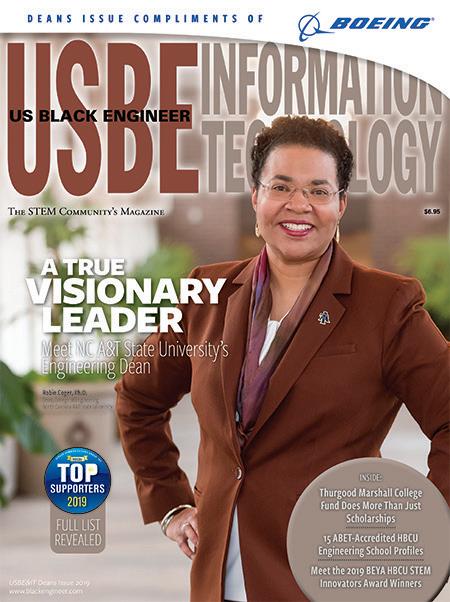
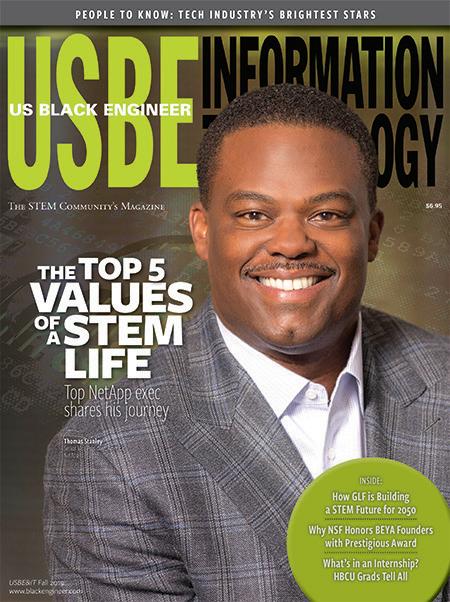


Career Communications Group, Inc. 729 East Pratt Street, Suite 504 Baltimore, MD 21202 (410) 244-7101 www.ccgmag.com Like us on Facebook facebook.com/BEYASTEM Follow us on Twitter @BlackEngineer Career Women In Technology & Business
SUBSCRIBE ONLINE!




STEMCITYUSA.COM YOUR SAFE AND TRUSTED COMMUNITY
ENERGY JOBS
CAREER OUTLOOK
The shift toward sustainable and clean power sources is creating a surge in job opportunities in the energy sector, particularly in renewable energy. The Top Supporters List celebrates organizations that prioritize diversity and work with historically Black colleges and universities. However, Black and Latino workers are still underrepresented in the industry.

INSIDE
> Industry Overview
> Job Horizon
> People to Know
> Companies to Work For
43 USBE & Information Technology | ENVIRONMENTAL ISSUE 2023 www.blackengineer.com
ENERGY INFRASTRUCTURE SECTOR THE
by ccgeditors@ccgmag.com
The energy infrastructure sector is experiencing a monumental shift as the world transitions toward sustainable and clean sources of power. As a result, numerous career opportunities have emerged for individuals passionate about making a difference in this crucial field.
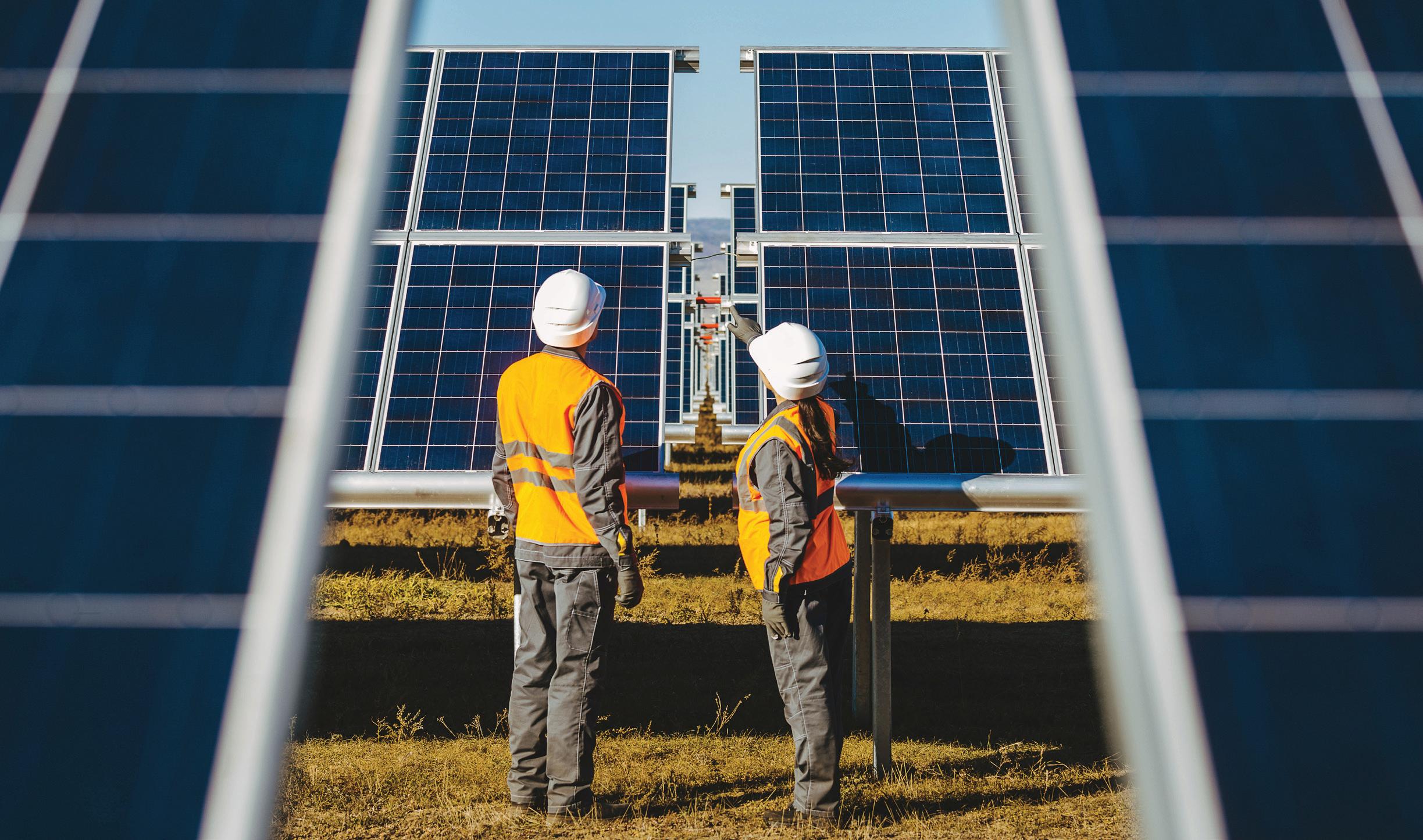
ASrenewable energy and energy efficiency technologies become more integrated into the U.S. power system, the creation and growth of clean energy jobs are on the upswing. This development bodes well for the nation’s economy, as investments in clean energy infrastructure and projects necessitate a larger American workforce. Currently, there are nearly 8 million jobs in the renewable energy sector. In 2021, employment in the energy industry grew at a faster pace than the overall U.S. employment rate.
The energy sector offers a wide range of career paths catering to various skill sets and interests. Future and current job seekers might consider any one of the following careers:
• Energy Analyst: Conducting research and analysis to optimize energy efficiency, identify costsaving measures, and assess the environmental impact of energy consumption.
• Sustainability Manager: Overseeing strategies to reduce
environmental impact and ensure compliance with sustainability goals.
• Energy Consultant: Advising clients on energy management, conservation, and the adoption of clean energy solutions.
• Grid Operations Specialist: Monitoring and managing the distribution and transmission of electricity across the power grid.
The current career opportunities in the energy sector have a profound impact on our daily lives, and future
44 USBE & Information Technology | ENVIRONMENTAL ISSUE 2023 www.blackengineer.com
CAREER OUTLOOK
careers will undoubtedly innovate our society. By transitioning to sustainable energy sources, these jobs help mitigate climate change, reduce our reliance on fossil fuels, and enhance our overall environmental well-being. Energy professionals are driving the development and deployment of innovative technologies, leading to cleaner air, healthier ecosystems and a more sustainable future for generations to come. Additionally, these careers create economic growth, foster innovation, and promote energy independence, contributing to the overall well-being of our global society. The energy sector offers competitive salaries, with the potential for significant growth. Starting salaries for entrylevel positions typically range from $50,000 to $70,000 per year, depending on the specific role and location. As professionals gain experience and expertise, average salaries can reach well into the six-figure range. The industry’s salary potential is bolstered by a rising demand for clean energy, evolving technologies, and increased
• Energy Storage Revolution: Advancements in energy storage technologies, such as hightech batteries, will facilitate the integration of intermittent renewable energy sources into the power grid. This will enable a more reliable and flexible energy system, reducing dependence on traditional power plants.
• Electrification of Transportation: The electrification of vehicles is gaining momentum, leading to a surge in demand for charging infrastructure and renewable energy generation. This trend will create new opportunities in clean transportation and smart grid integration.

Several companies are driving the energy sector forward and providing exciting career opportunities. Some of the prominent players in the energy and energy infrastructure sector include:
investments in renewable projects worldwide. Moreover, the transition to green energy sources has spurred a surge in job creation, with the energy sector projected to outpace many other industries in terms of employment growth.
Looking ahead, the energy industry is poised for remarkable transformation in the next 5–10 years. Key trends that will shape the industry include:
• Renewable Energy Dominance: The world is rapidly adopting renewable energy sources, such as solar and wind, which will continue to displace fossil fuels. This transition will drive job creation, innovation, and investment in sustainable technologies.
• Decentralized Energy Systems: Distributed energy resources, including rooftop solar panels and microgrids, will continue to gain popularity. This decentralized approach will enhance energy resilience, provide greater control over energy consumption, and enable communities to become selfsufficient in energy production.
The energy sector is a hotbed of opportunity for individuals seeking rewarding careers that contribute to a sustainable future. As the world transitions toward cleaner energy sources, the demand for skilled professionals in renewable energy, energy efficiency, and sustainable practices will soar. By joining leading companies in the energy sector, job seekers and college students can make a tangible impact on the world while enjoying competitive salaries and significant opportunities for growth. S
• TESLA: Renowned for its electric vehicles and innovative energy storage solutions.
• NEXTERA ENERGY: The largest renewable energy generator in North America, with a focus on wind and solar power.
• ORSTED: A global leader in offshore wind energy, driving the transition to a renewable future.
• BP: Embracing a diversified energy portfolio, including renewables, biofuels, and lowcarbon technologies.
• GENERAL ELECTRIC: Offering a range of energy solutions, from gas and wind turbines to grid optimization and electrification technologies.
45 USBE & Information Technology | ENVIRONMENTAL ISSUE 2023 www.blackengineer.com
INDUSTRY OVERVIEW
LOOKING AHEAD, THE ENERGY INDUSTRY IS POISED FOR REMARKABLE TRANSFORMATION IN THE NEXT 5–10 YEARS.
Renewable Energy Engineer: Designing, developing, and implementing renewable energy systems such as solar, wind, and hydroelectric power.
WHERE THE JOBS ARE in the Energy Industry
by ccgeditors@ccgmag.com
The energy industry offers a wide array of job opportunities across various sectors, making it an attractive field for individuals interested in science, technology, engineering, and mathematics (STEM). Where are these jobs located worldwide? According to the International Energy Agency, “The regional distribution of energy jobs depends on multiple factors. First, jobs are concentrated where energy facilities are being built more than where they currently exist. Given
the labour intensity of building new facilities, fast-growing markets tend to dominate the workforce.” The energy industry presents diverse employment options in both traditional and renewable sectors. Here are some prominent areas of the industry where job opportunities exist:
• Renewable Energy: Solar, wind, hydroelectric, and geothermal power offer roles in design, installation, maintenance, and project management.
• Energy Efficiency: Energy
auditors, analysts, and consultants are sought after to optimize energy consumption and reduce environmental impact.
• Oil and Gas: Exploration, drilling, refining, and distribution provide employment in traditional energy sectors.
• Grid Management: Specialists in grid operations, smart grids, and energy storage are in high demand for efficient power distribution.
• Energy Consulting: Experts

46 USBE & Information Technology | ENVIRONMENTAL ISSUE 2023 www.blackengineer.com
CAREER OUTLOOK
who offer strategic guidance on sustainability, policy, and market analysis.
• Energy Policy and Regulation: Professionals who shape energy policies and ensure compliance with environmental standards. As the energy industry continues to evolve, recruiters will seek talent in a wide variety of areas, which benefits job seekers from a variety of backgrounds:
• Renewable Energy Project Development: Focusing on the planning, financing, and execution
of renewable energy projects.
• Energy Storage and Battery Technology: Experts in battery technologies, energy storage systems, and grid integration.
• Electric Vehicle (EV) Infrastructure: Professionals skilled in developing EV charging infrastructure and managing EV fleets.
• Cyber Security in Energy: Specialists adept at safeguarding critical energy infrastructure from cyber threats.
• Data Analytics and Artificial Intelligence: Professionals capable of harnessing big data and AI to optimize energy systems and predict demand.
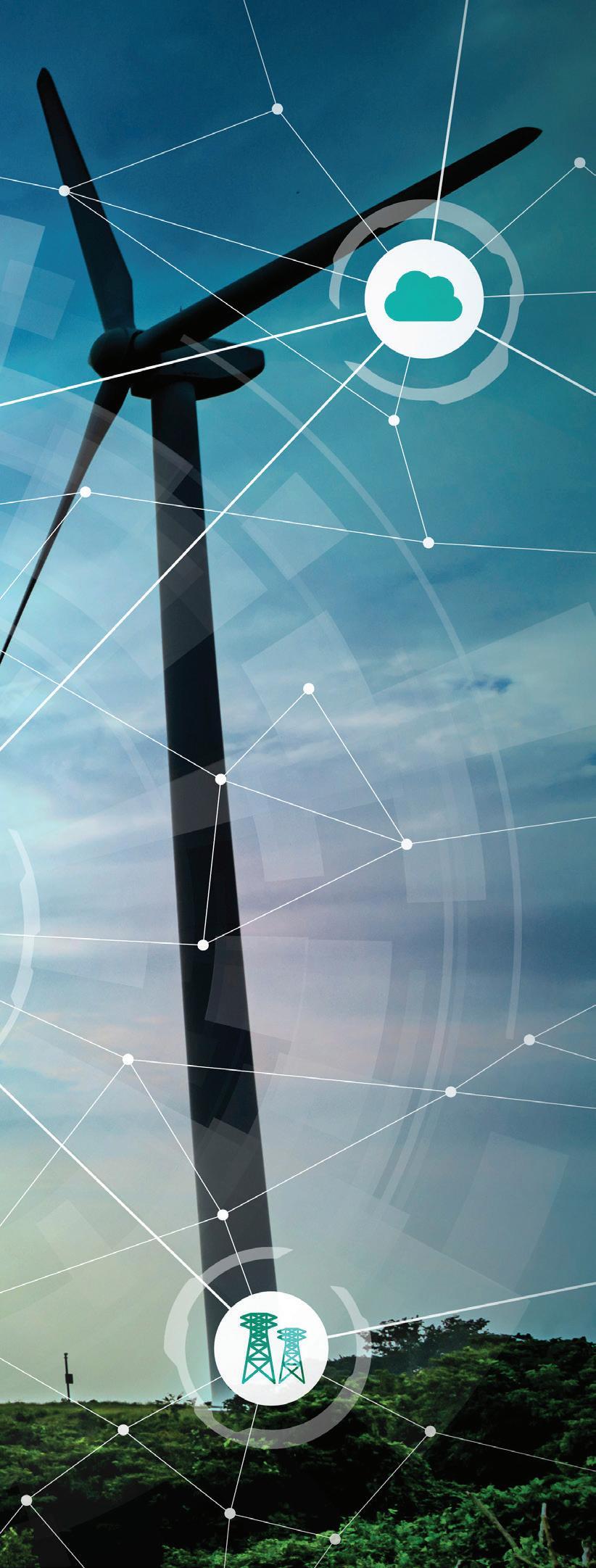
To excel in the energy industry, you should develop your skills, focus on areas of interest, select college majors, or pursue trades. Depending on your aptitude and interests, consider developing a strong STEM background, specifically foundations in science, technology, engineering, and mathematics, which are crucial for most energy industry roles. Another skillset of interest is renewable energy expertise. Specialize in renewable energy technologies—such as solar, wind, or hydroelectric power—to gain access to broad career paths in renewable energy, such as solar energy panel technician.
Understanding energy-efficient technologies, energy auditing, and sustainability practices is a valuable set of knowledge for roles like an energy auditor. Likewise, proficiency in data analytics, modeling, and visualization tools for optimizing energy systems is a desirable area of expertise for employers. For those seeking nontechnical careers in the energy infrastructure industry, environmental and policy awareness could be a key skill to develop. Stay informed about energy policies, regulations, and environmental considerations if a career in environmental or energy advocacy sounds interesting. As with other STEM industries, job seekers will need to develop strong organizational, communication, and leadership skills for
successful project execution. A blend of technical skills and soft skills will help prepare you for potential employment. How can job seekers prepare for a career in the energy and energy infrastructure industry? Building your background of experiences, skills, and ultimately your resume can be achieved through a few tried-andtrue endeavors. Seek opportunities to gain practical experience and industry exposure through internships or apprenticeships with energy companies or research institutions. Obtain relevant certifications in energy efficiency, renewable energy technologies, or project management to enhance employability. Stay updated on industry trends, attend conferences, and network with professionals to gain insights and establish valuable connections. Pursue undergraduate or graduate degrees in fields such as engineering, environmental science, renewable energy, or energy management to gain in-depth knowledge and expertise. Join industry-related professional associations to access resources, networking opportunities, and career support.
As you begin your career, continuously update your knowledge about emerging technologies, policy changes, and industry trends. Pursue professional development opportunities to stay ahead of evolving demands. Acquire and maintain a broad range of skills and interdisciplinary knowledge to adapt to the dynamic energy landscape. Connect with experienced professionals who can provide guidance and support throughout your career journey. Show enthusiasm for sustainable energy solutions and be open to new challenges and innovations.
The energy industry offers abundant job opportunities across diverse sectors, providing a promising career path for STEM professionals. By focusing on the areas in high demand, developing the necessary skills, and gaining practical experience, individuals can position themselves for a successful and rewarding future in this ever-evolving industry. S
47 USBE & Information Technology | ENVIRONMENTAL ISSUE 2023 www.blackengineer.com
JOB HORIZON
By focusing on the areas in high demand, developing the necessary skills, and gaining practical experience, individuals can position themselves for a successful and rewarding future in this ever-evolving industry.
TOP SUPPORTERS OF HBCU ENGINEERING SCHOOLS: ENERGY AND ENERGYRELATED EMPLOYERS

THEU.S. Department of Energy’s Office of Energy Efficiency and Renewable Energy (EERE) recognized the racial disparities in the country’s energy systems and research during Black History Month in February 2023. In response, the DOE pledged to increase engagement and collaboration with historically Black colleges and universities (HBCUs) and other minority-serving institutions (MSIs) to promote greater equity in the energy sector.
According to an energy department report, energy sector jobs include all the professional, construction, utility, operations, and production occupations associated with energy infrastructure, production, and use, including the manufacturing of motor vehicles.

As per the report, in 2021, motor vehicles and component parts companies employed about 2.6 million workers. The energy efficiency technology group,
by ccgeditors@ccgmag.com
one of the largest groups, had over 2.1 million workers in 2021, while the United States had an estimated 857,579 electric power generation jobs in the same year. The nuclear sector employed 64,743 workers across all technologies.
The petroleum sector employed 669,042 workers across all technologies. Petroleum employment is concentrated in fuels, which accounts for 69 percent of jobs within that technology area. The coal sector employed 155,884 workers across all technologies, with the largest concentration—70,831—in electricity.
Coal fuels totaled 53,312 jobs with another 31,741 in fuel transmission and distribution. The natural gas sector employed 535,284 workers across all technologies, with the largest concentration (211,773) in fuels, although this was closely followed by fuel transmission and distribution. Together, these two technologies make up 79 percent of all natural gas jobs.
The latest demographics report on the U.S. energy workforce states that 5.6 million workers identified as white, while only 608,443 workers identified as Black or African American in 2021. The report also shows
48 USBE & Information Technology | ENVIRONMENTAL ISSUE 2023 www.blackengineer.com CAREER OUTLOOK
United States Energy & Employment Jobs Report, June 2022
Top Supporters of HBCU Engineering Schools
2023 marked the 20th anniversary of the Top Supporters List. In the spring edition of US Black Engineer magazine, we celebrated the anniversary of the survey that is completed each year by engineering deans at historically Black colleges and universities (HBCUs) and AMIE, a corporate-academic alliance.
Here, we did a review of all the energy and energy-related companies and organizations that appeared on the list within the last decade. These organizations contribute to these schools’ institutional missions and go beyond traditional industry-university relationships. They are committed to diversity and have a deep investment in working with HBCUs. Here they are from A to Z.
• Air Force Office of Scientific Research
• Air Force Research Laboratory
• Applied Research Lab at Penn State
• Baker Hughes
• Battelle Corporation
• Brasfield and Gorrie
• CenterPoint Energy

• Chevron
• Con Edison
• ConocoPhillips
• Cummins
• Denso Corporation
• Dominion Energy
• Duke Energy
that there were 125,591 American Indian or Alaska Native workers, 503,710 Asian workers, and 72,736 Native Hawaiian or other Pacific Islander workers.
The energy industry has a higher percentage of non-white workers, accounting for 26 percent of the workforce, which is greater than the 22 percent average for the entire U.S. workforce. However, the industry has a lower percentage of Black and Latino workers than other industries. Unfortunately, there are no technology industries that have proportional representation of Black workers to their overall representation in the U.S. workforce. S
• Edison International
• Entergy
• Exelon
• ExxonMobil
• Ford Motor Company
• General Electric (GE)
• General Motors (GM)
• The Goodyear Tire & Rubber Company
• Idaho National Laboratory
• Johns Hopkins University Applied Physics Laboratory
• KBR
• Kinder Morgan
• Lawrence Livermore National Laboratory
• National Oceanic and Atmospheric Administration
• NextEra Energy
• Nissan North America
• Oak Ridge National Laboratory
• Office of Naval Research
• Rolls-Royce
• Sandia National Laboratories
• Shell plc
• Siemens Global
• Southern Company
• Toyota
• U.S. Department of Agriculture
• U.S. Department of Defense
• U.S. Department of Energy
• U.S. Department of Transportation
• Volkswagen of America
• Whiting Turner
49 USBE & Information Technology | ENVIRONMENTAL ISSUE 2023 www.blackengineer.com COMPANIES TO WORK FOR
These organizations go beyond traditional industry-university relationships. They are committed to diversity and have a deep investment in working with HBCUs.
CHANGEMAKERS: BLACK ENGINEERS IN ENERGY
 by ccgeditors@ccgmag.com
by ccgeditors@ccgmag.com
According to a recent U.S. Department of Energy report, the top energy sector industries are motor vehicles, energy efficiency, fuels, transmission, distribution and storage technologies, and power generation. The report noted that the energy industry has significantly lower gender diversity than the U.S. workforce. Men comprise 74 percent of the energy workforce, while women comprise only 25 percent. In contrast, the U.S. average workforce is 53 percent male and 47 percent female.
Although the energy industry has a higher percentage of non-white workers, at 26 percent, it still has a lower-than-average representation of Black and Latino workers. Additionally, no energy technology industries have a proportional representation of Black workers compared to their overall
representation in the U.S. workforce. Workers of two or more races are more represented in the energy industry, at 8 percent, compared to just 2 percent across all U.S. industries. However, inconsistent responses have been noted when answering questions about two or more races. The percentage of Asian workers in the energy industry aligns with the national average. Finally, the energy industry skews younger, with only 17 percent of workers being over 55, compared to the national average of 24 percent.
Changemakers: Black Engineers in Energy ELECTRICITY, OIL, AND NATURAL GAS
In 1999, US Black Engineer magazine named oil executive Paul L. Caldwell the Black Engineer of the Year. Mobil nominated Caldwell for producing oil,
natural gas liquids, and condensate profitably and safely. As chairperson of Mobil Producing Nigeria, he led almost 4,000 employees and contractors in producing 625 barrels of oil and gas daily with a budget of over $1 billion. Early in his career, he managed technology production in Dallas, TX, bringing a 500,000-acre oil field in West Africa onstream in 18 months. Caldwell got the most natural gas production possible in Indonesia from Mobil’s giant Arun field.
In 2006, the National Inventors Hall of Fame inducted Lewis Latimer for making incandescent lighting practical and affordable for consumers. He made his most important innovation in electric light technology while working for the United States Electric Lighting Company in the 1880s. Safer than gas lamps and less harsh than arc lights, incandescent bulbs transformed the average American home after nightfall. After leaving U.S.
50 USBE & Information Technology | ENVIRONMENTAL ISSUE 2022 www.blackengineer.com
CAREER OUTLOOK
Electric Lighting, Latimer worked for Thomas Edison and became a patent investigator and expert witness for the Edison Electric Light Company.
In 2021, the National Academy of Engineering elected Erroll B. Davis, Jr. to its Electric Power/Energy Systems cadre for leadership in the research and development of renewable resources integration with the grid and public education. Davis was CEO of Alliant Energy before retiring, serving over a million customers operating fossil fuel, nuclear, and renewable generation facilities across the upper Midwest. When Davis was named Black Engineer of the Year in 1988, he was the highestranking African American in the utility business.
Thirty years later, Baltimore Gas and Electric (BGE) engineer Taiwo Alo received the Erroll B. Davis Legacy Award
at the BEYA STEM Conference. “I am deeply honored to receive this award and am inspired to join past recipients who I have long admired and respected,” said Alo, who joined BGE in 2009 as an electrical engineer in the Transmission Planning unit and served as a manager of BGE’s Transmission Engineering Design and Standards unit. His team provided engineering and project management
support for electric facility construction, oversaw infrastructure maintenance programs, and investigated unplanned outages.
Anthony James, the 2004 Black Engineer of the Year, became president and CEO of Savannah Electric in 2001. During his career, he managed five Georgia Power generating plants, one of which was America’s largest coal-fired power plant.
ENERGY AND TRANSPORTATION
Rodney O’Neal, 2002 Black Engineer of the Year, began his automotive career at General Motors (GM). After successive promotions to positions of increasing responsibility, he was appointed executive vice president of Delphi Automotive Systems and president of the company’s safety, thermal, and electrical architecture sector. Delphi
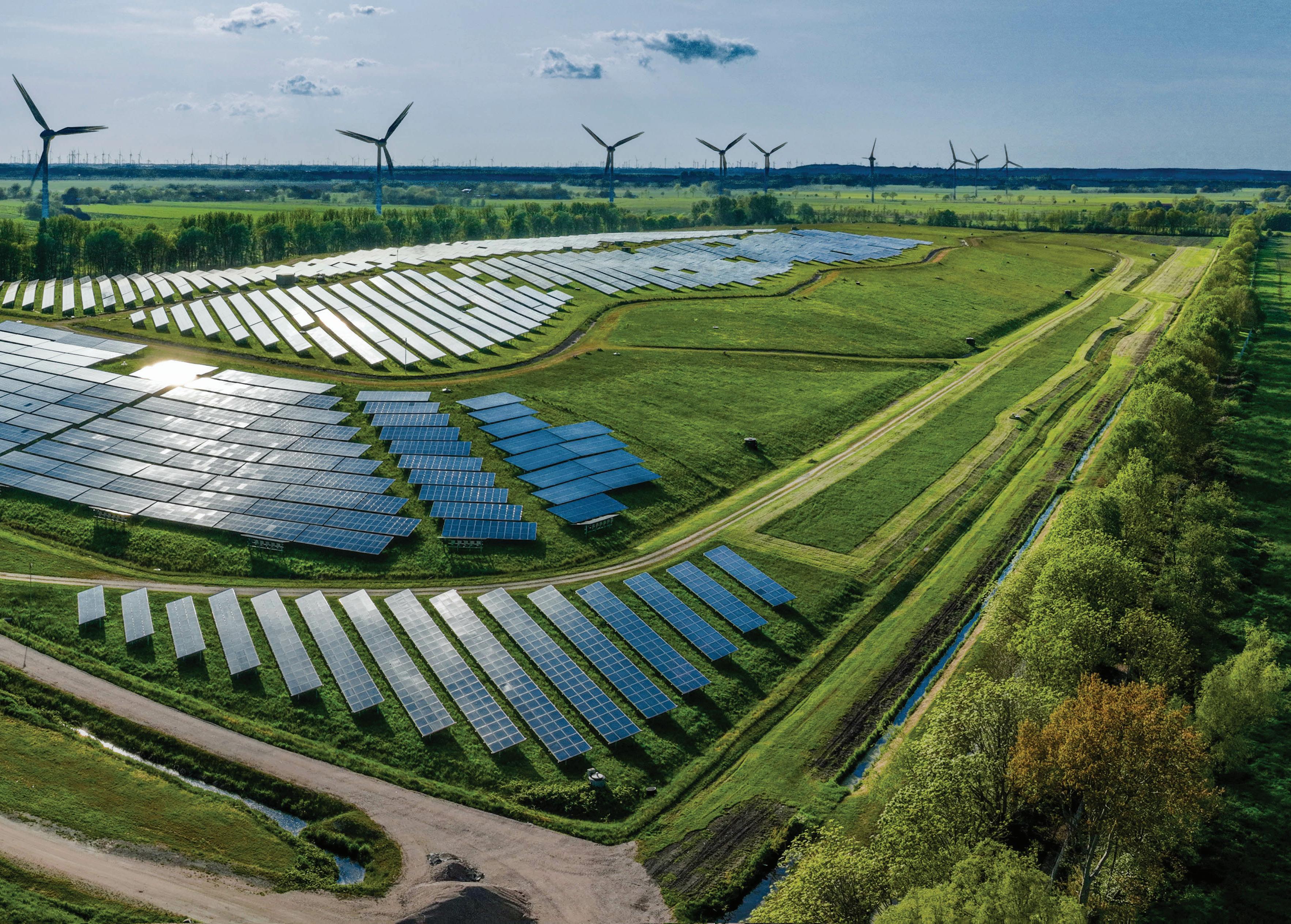
51 USBE & Information Technology | ENVIRONMENTAL ISSUE 2022 www.blackengineer.com PEOPLE TO KNOW
NO ENERGY TECHNOLOGY INDUSTRIES HAVE A PROPORTIONAL REPRESENTATION OF BLACK WORKERS COMPARED TO THEIR OVERALL REPRESENTATION IN THE U.S. WORKFORCE.
CAREER OUTLOOK
Automotive made components such as window degrees, climate control systems, electrical wiring designs controlling ignition, and electronics for the Segway, the forerunner of the electric kick scooter.
Ed Welburn, the 2015 Black Engineer of the Year, graduated from Howard University in 1972 and began his dream job on GM’s design team. He won wide recognition during his career, including watching his team win North American
to Gerald Johnson, executive vice president of Global Manufacturing for GM. He was recognized for his commitment to mentoring; promoting diversity, equity, and inclusion; and leading GM’s efforts to support the United States during the pandemic. Johnson heads GM’s global manufacturing operations, engineering, and labor relations organizations. “Gerald’s passion for the business, strong leadership skills, and extensive
physical scientist known for her research and academic achievements. Throughout her career, she has conducted analyses to study how terrestrial plants can assist in stabilizing and managing the impacts of U.S. Department of Defense munitions constituents on military facilities. She has also authored and co-authored numerous technical publications and presented her findings at several professional meetings. Butler was also part of a team that received
Car of the Year, Best in Show honors, and an Eyes on Design Best Production Vehicle Design award. Welburn found success as GM’s first-ever AfricanAmerican design chief in automobile manufacturing history. In 2013, he stood shoulder to shoulder with President Barack Obama near his prized product at the Washington Auto Show, the 2013 Chevy Malibu.
2018 Black Engineer of the Year
Alicia Boler Davis began working as a manufacturing engineer in GM’s midsize/luxury car division in 1994. By 2007, she was plant manager at the company’s truck plant in Texas, the first African-American woman to oversee a manufacturing plant. She is also the first person to lead the engineering and manufacturing of a vehicle family at GM. During the 35th BEYA Gala, the 2021 Black Engineer of the Year Award went
manufacturing and labor experience will help us continue to transform the company, supporting both the core business and the future of mobility,” said Mary Barra, GM chairman and CEO.
ENERGY, CLIMATE, AND SECURITY
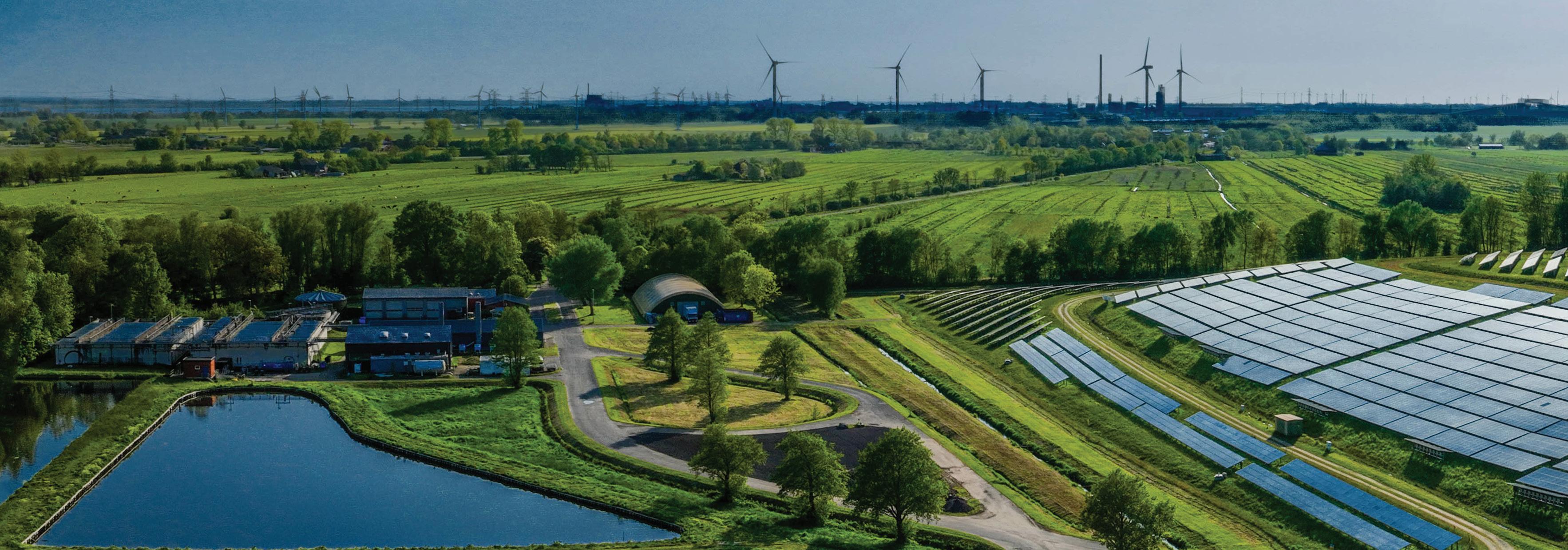
AFRACHANNA D. BUTLER Research Physical Scientist U.S. Army Engineer Research and Development Center
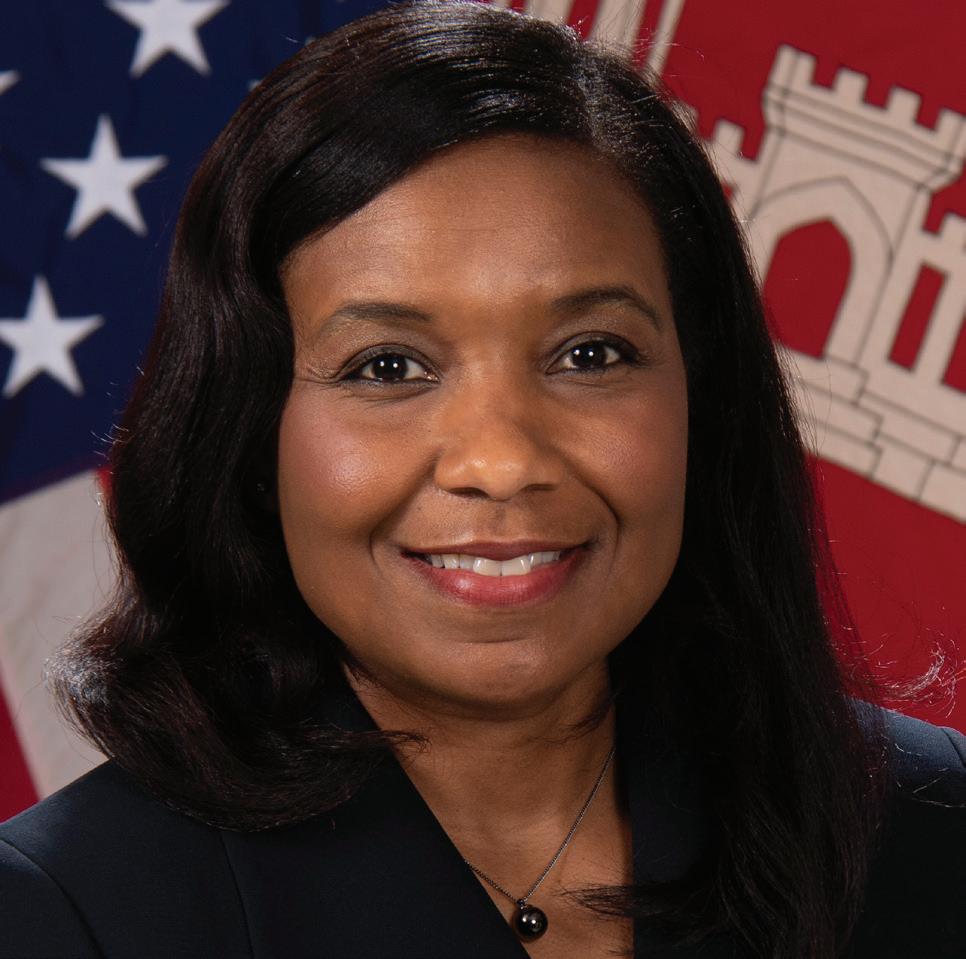
Afrachanna D. Butler, Ph.D., has been working at the Environmental Laboratory of the U.S. Army Engineer Research and Development Center since graduating with a Bachelor of Science degree in biology from Jackson State University (JSU) in 2000. She also obtained a Master of Science in biology from JSU in 2002 and her Ph.D. in environmental science from JSU in 2009. Butler is a
Outstanding Achievement Awards in Technology Transfer in 2010 and 2012 for its projects investigating the applications of terrestrial plants in preventing heavy metal transport in soils. Butler is an excellent mentor and role model. She provides on-the-job training and supervision to high school students and undergraduates from Hinds Community College, Alcorn State University, JSU, and Tougaloo College. Her motivation and determination inspire many to pursue further science education and technical careers in federal and state agencies.
APRIL SMITH
Systems Engineering Lead/Process Improvement Specialist MITRE Corporation
April Smith, Ph.D., was among the few African-American nuclear reliability and risk analysts at the U.S. Nuclear

52 USBE & Information Technology | ENVIRONMENTAL ISSUE 2022 www.blackengineer.com
AFRACHANNA D. BUTLER U.S. Army Engineer Research and Development Center
APRIL SMITH MITRE Corporation
Regulatory Commission (NRC) and in the nuclear power industry. Her unique skill set is critical to ensuring safe nuclear operations. Her expertise in nuclear plant operations, reliability, probabilistic risk assessment, and human reliability analysis has been instrumental in advancing regulatory decision-making and completing technical reviews to license critical infrastructure facilities. One recent example of her exceptional contributions is her precedent-setting
scientist at NOAA’s National Ocean Service (NOS) Center for Oceanographic Operational Products and Services (CO-OPS). She has been an integral part of the agency for 21 years, contributing significantly to advancing technology and innovation in engineering. Johnson is responsible for documenting federal and non-federal partnerships for collecting oceanographic, meteorological, and ocean current data. This documentation ensures that
Tammie Jones-Jefferson’s interest in agricultural sciences began growing up in rural Mississippi. She witnessed her community sharing farming resources to provide food security and access to fresh fruits and vegetables. Jones-Jefferson completed her undergraduate studies in chemistry at Jackson State University. For the first 14 years of her career, she worked as an analytical chemist in core research and development, contributing significantly to Corteva and
review of a facility to process medical isotopes. Smith led the technical review of SHINE Medical Technologies, which will produce the much-needed domestic supply of the medical isotope Molybdenum-99. She developed a novel approach to reviewing and auditing safety analysis documents to ensure the facility prevents and mitigates accidents of concern, setting a new standard for NRC technical reviewers to follow. Smith’s contributions were crucial for ensuring that NRC staff reviews are effective and efficient and focusing inspection resources on risk-significant areas.
ARTARA JOHNSON Agreements and Partnership Coordinator
 NOAA/NOS Center for
NOAA/NOS Center for
Operational
Oceanographic Products and Services
Artara Johnson is a lead physical
CO-OPS remains the authoritative source of reliable information about timely tides, water levels, currents, and other coastal oceanographic and meteorological areas. Johnson has been instrumental in developing an electronic tool for operating oceanographic, meteorological, and ocean current sensors. Johnson started her career at NOAA in 2001 as a student engineer participating in NOAA’s Student Temporary Employment Program (STEP) while attending a community college. She networked with scientists and engineers at NOAA and continued her employment with the agency after transitioning from student employee to federal contractor.
TAMMIE JONES-JEFFERSON
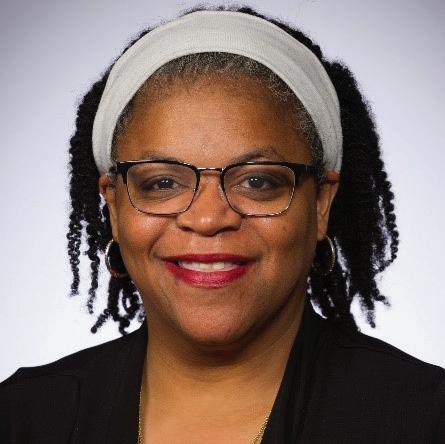
Global Regulatory Leader and Business Partner for Pasture and Land

the agriculture industry. As a federal regulatory leader, she leads a team that supports Corteva products in states across the United States and represents Corteva on industry-related science initiatives as a technical advisor.
Additionally, Jones-Jefferson engages in the agriculture industry through participation in industry working groups such as CropLife America and the Association of American Pesticide Control Officials. Her main job is as a global regulatory leader and business partner, guiding the development of technical and business strategies for a range of products on a global scale. Jones-Jefferson is also a consultant and leader for nonprofit organizations dedicated to college student career advancement and ministries in finances, project management, and leadership. S
53 USBE & Information Technology | ENVIRONMENTAL ISSUE 2023 www.blackengineer.com
Management Portfolio Corteva Agriscience
PEOPLE TO KNOW
ARTARA JOHNSON
NOAA/NOS Center for Operational Oceanographic Products and Services
TAMMIE JONES-JEFFERSON Cortiva Agriscience
Powering innovation by advancing diversity

From diversity, strength. The more diverse we are as a company, the stronger, smarter and more innovative we become. That’s why we’re proud to support the advancement of our Hispanic employees.
Learn more at rtx.com/careers
© 2023 RTX Corporation. All rights reserved.
Diversity Matters to Us
We are building the most diverse, equitable and inclusive workforce for all to come, stay, and thrive.
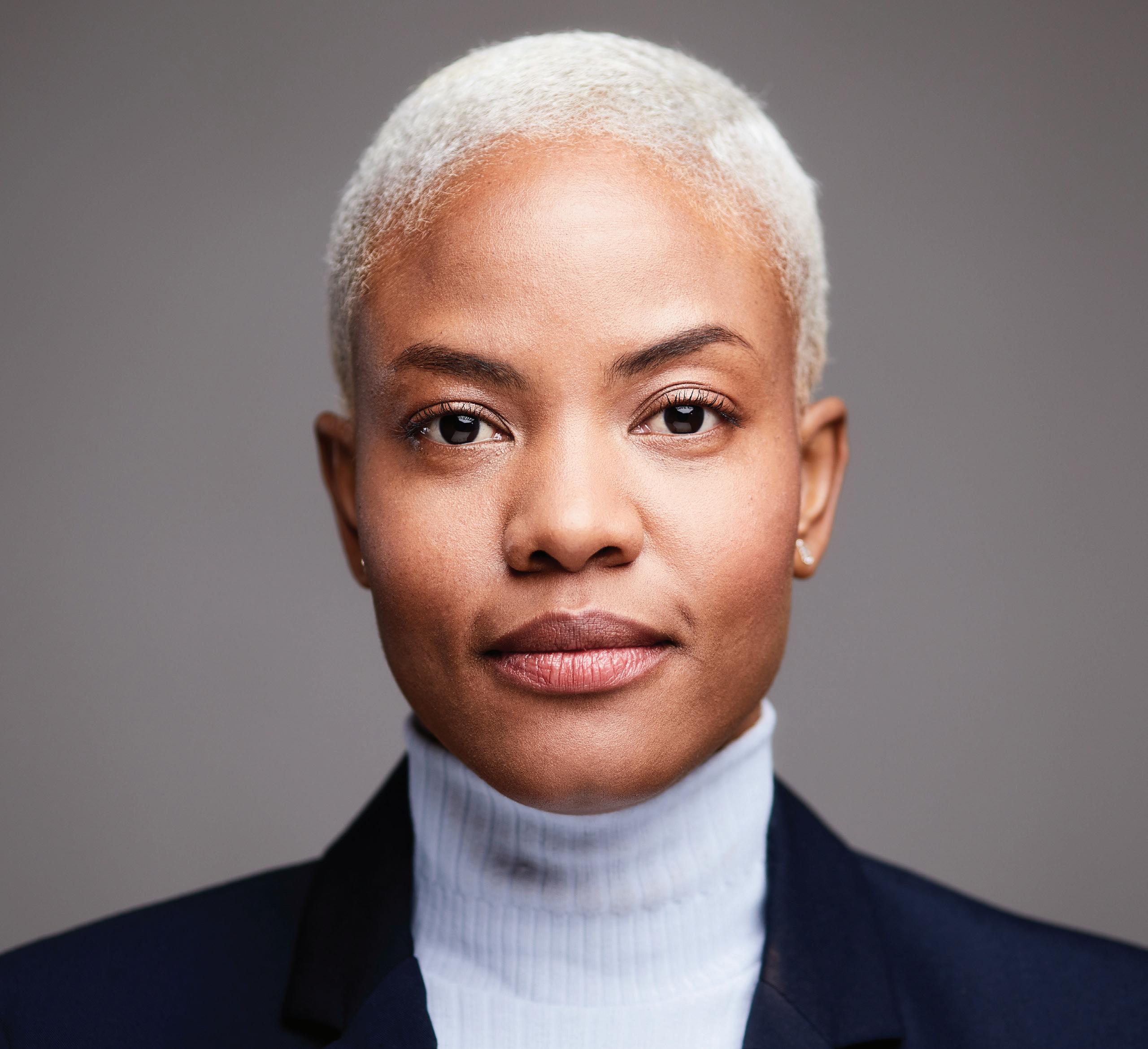
Everybody In at HP. To learn more, visit HP.com/diversity

Defining tomorrow with today’s leaders.
At Lockheed Martin, inclusion drives success. We are proud to be named the lead Top Corporate Supporter of Historically Black Colleges and Universities (HBCUs) Engineering Programs for the ninth year in a row. Diverse backgrounds, experiences and points of view help us create incredible work, solve customers’ toughest challenges and engineer solutions around the world. We don’t know what’s going to change the world next. But we’re probably already working on it. Learn more at lockheedmartin.com/diversity

© 2023 Lockheed Martin Corporation VC 20-05923















 Tyrone
Chief
Tyrone
Chief







































 by editors@ccgmag.com
by editors@ccgmag.com




















 Yolanda Shea
NASA’s Earth Observing System, NASA Langley
Yolanda Shea
NASA’s Earth Observing System, NASA Langley









 Larry Laws Director of Utility Training BGE
Larry Laws Director of Utility Training BGE


















 by ccgeditors@ccgmag.com
by ccgeditors@ccgmag.com




 NOAA/NOS Center for
NOAA/NOS Center for





